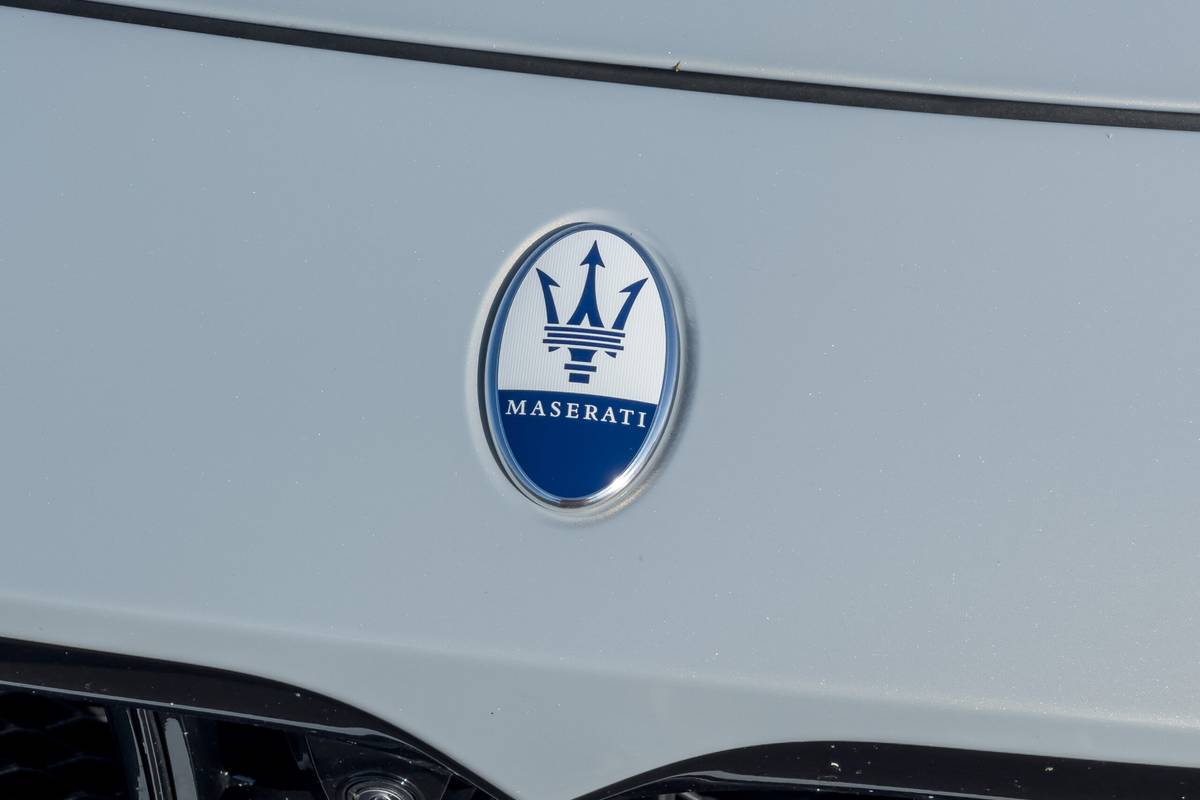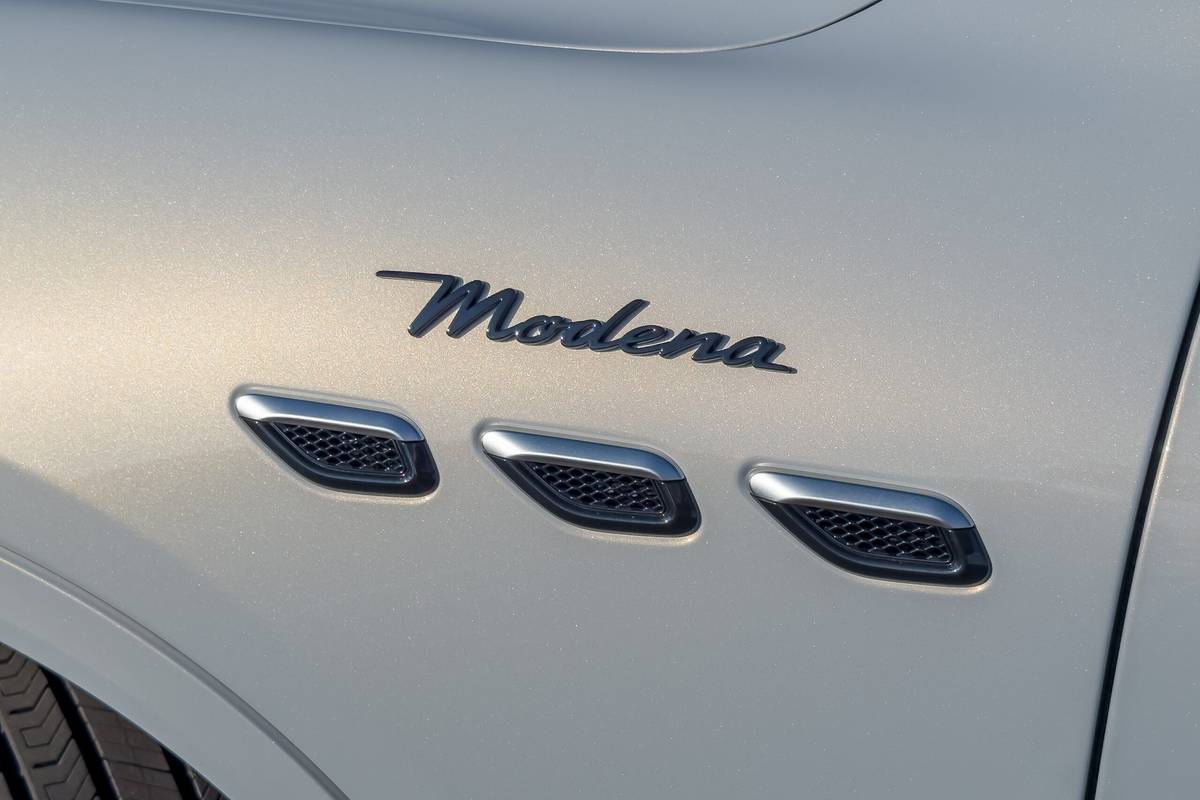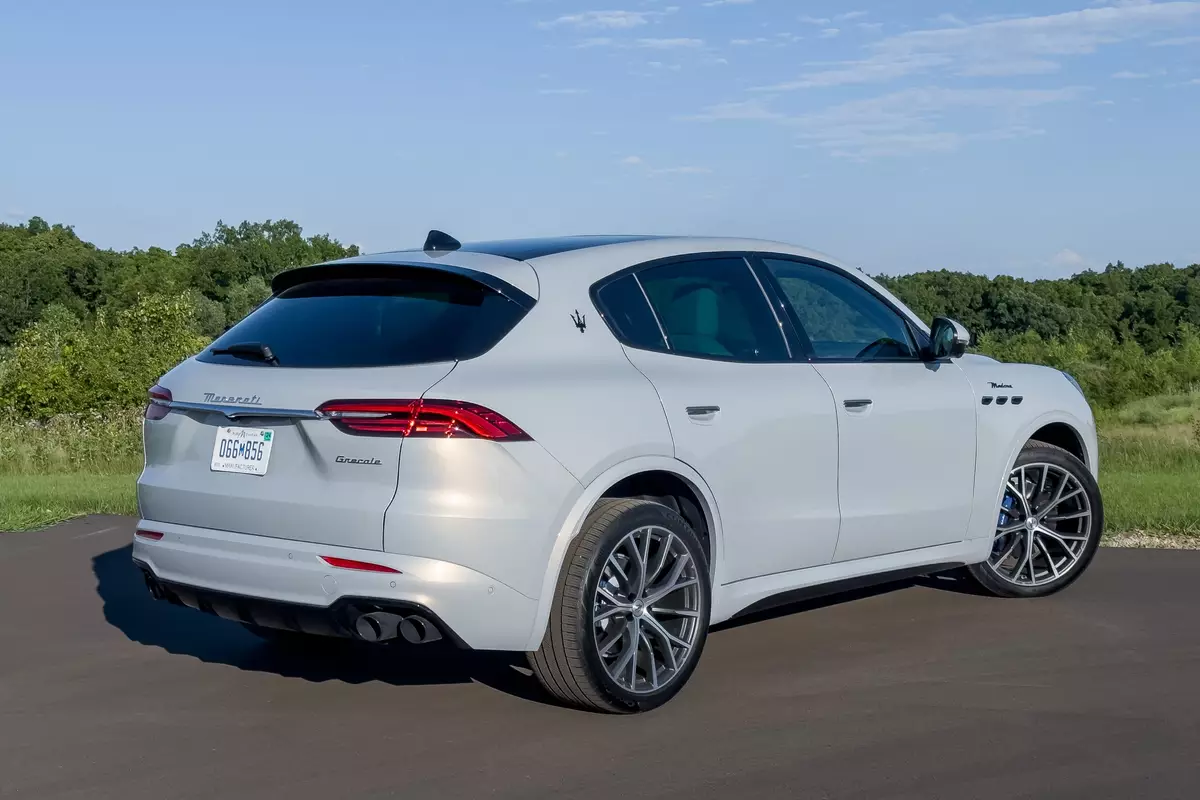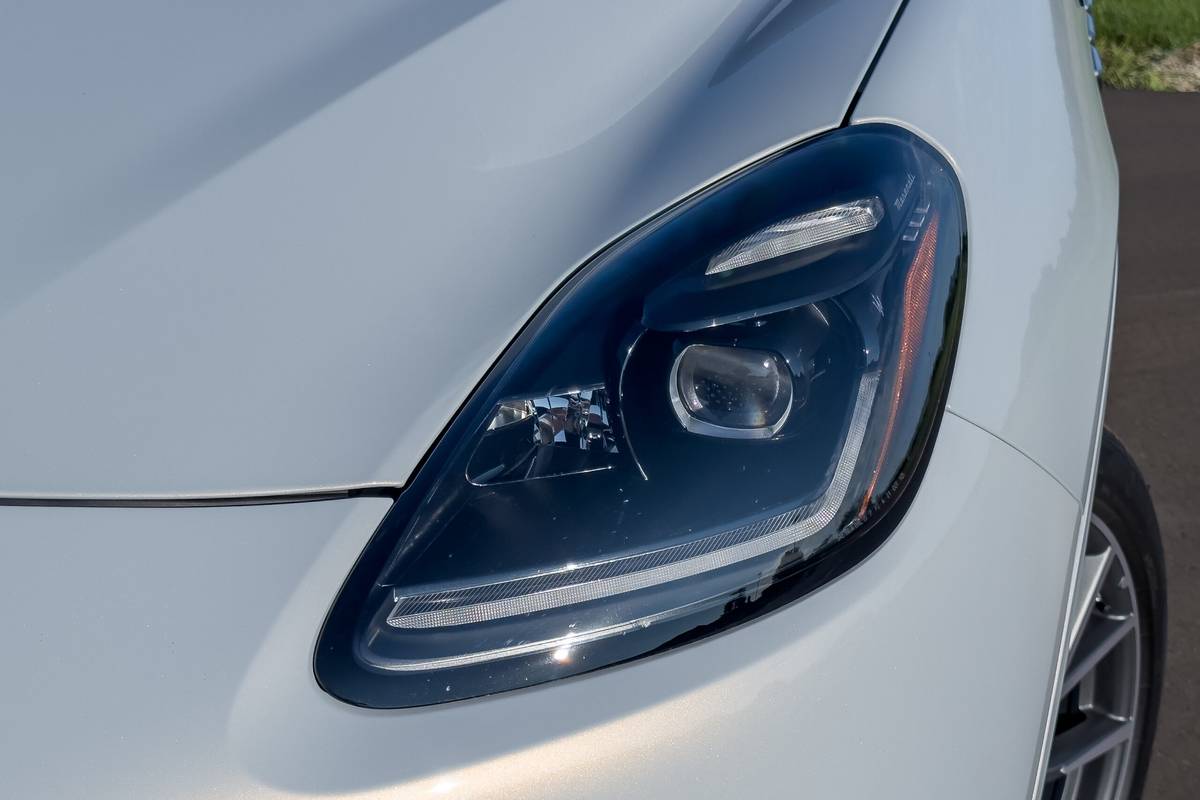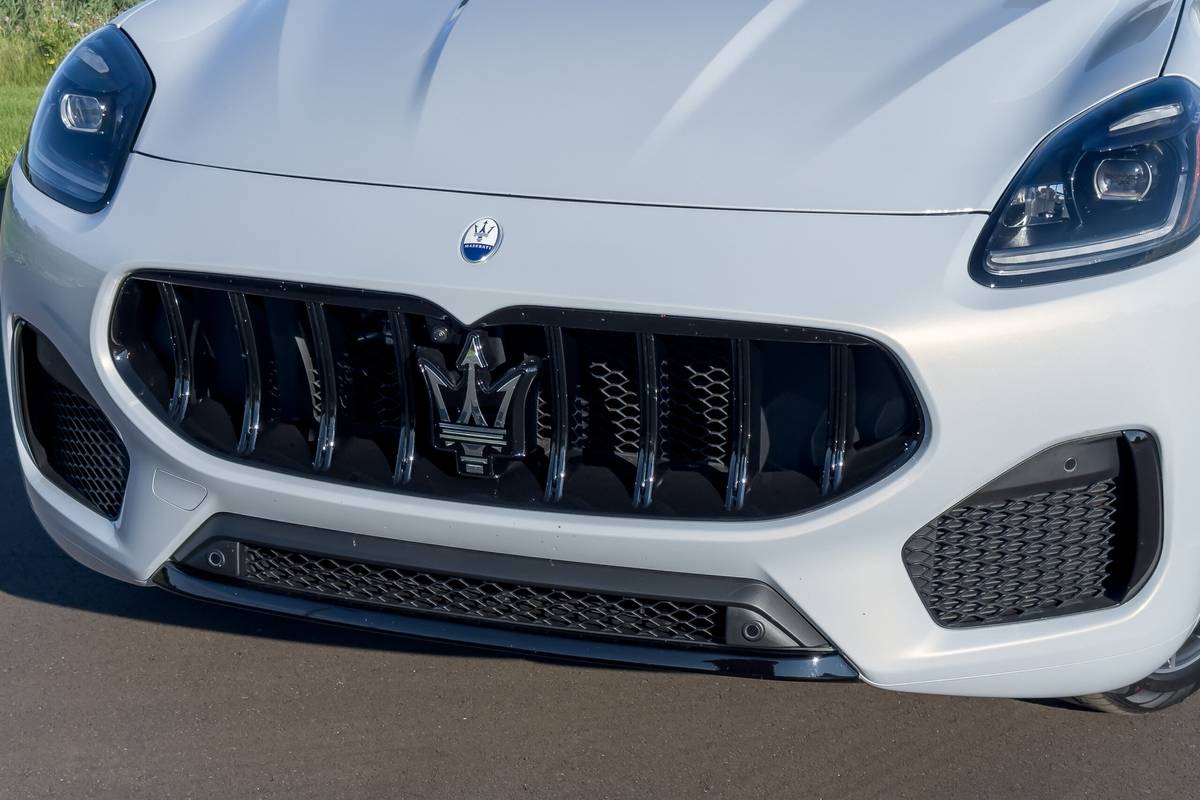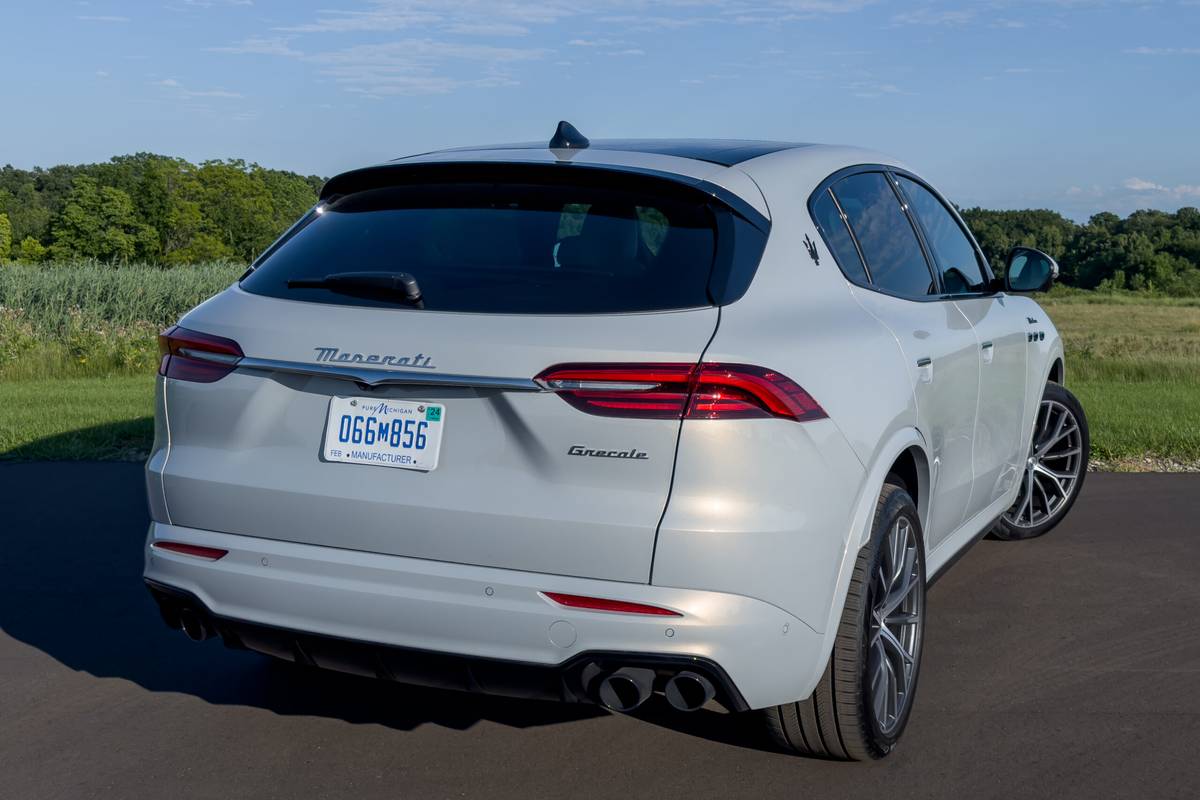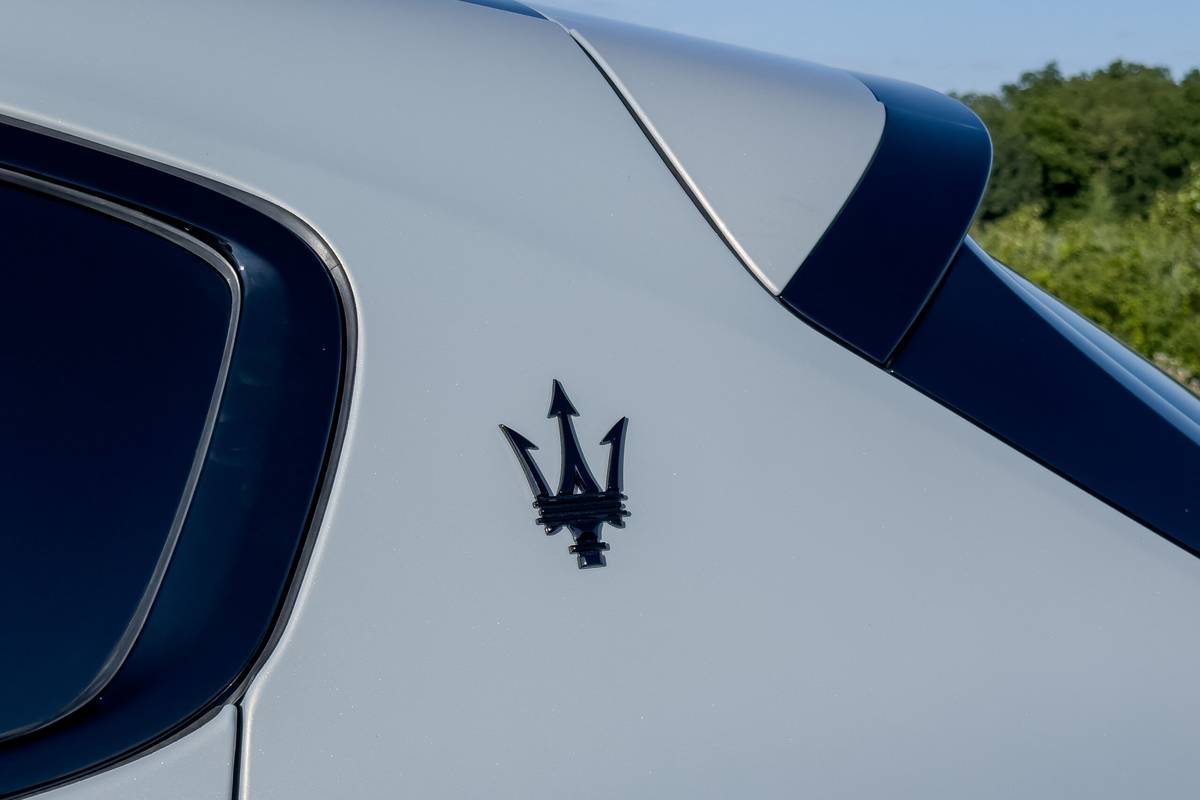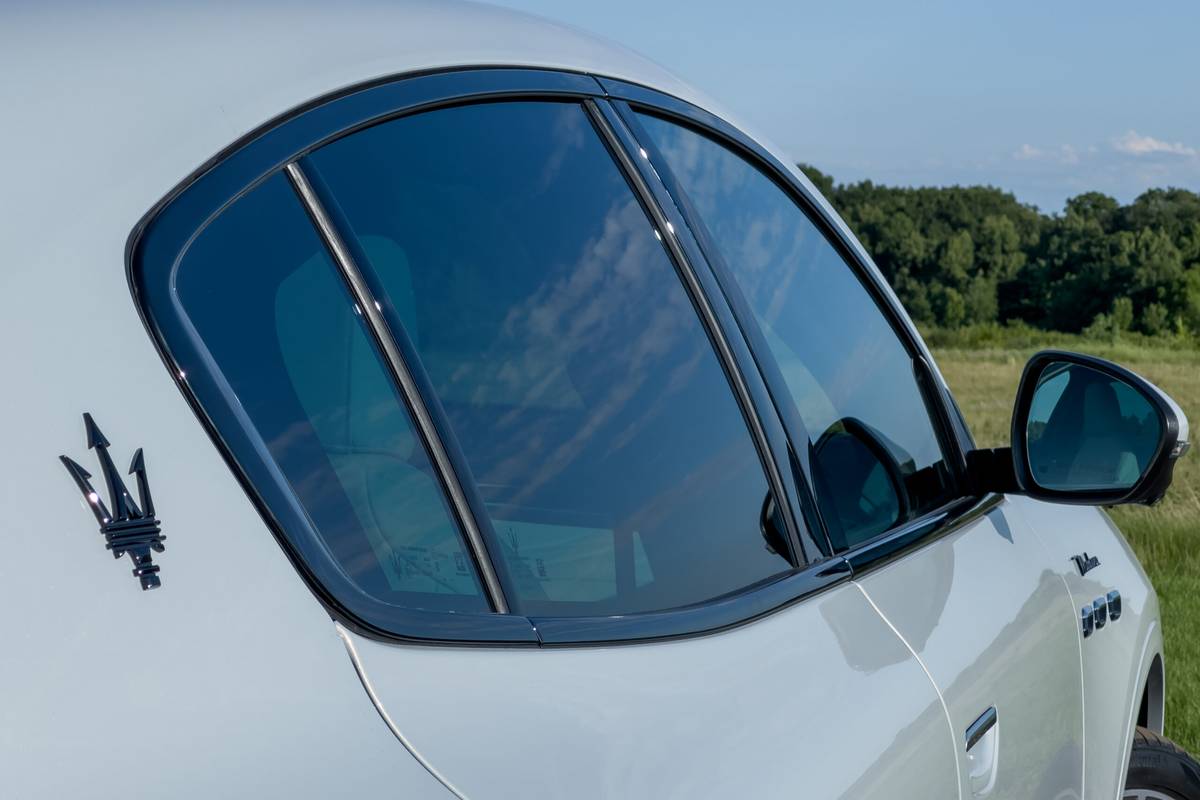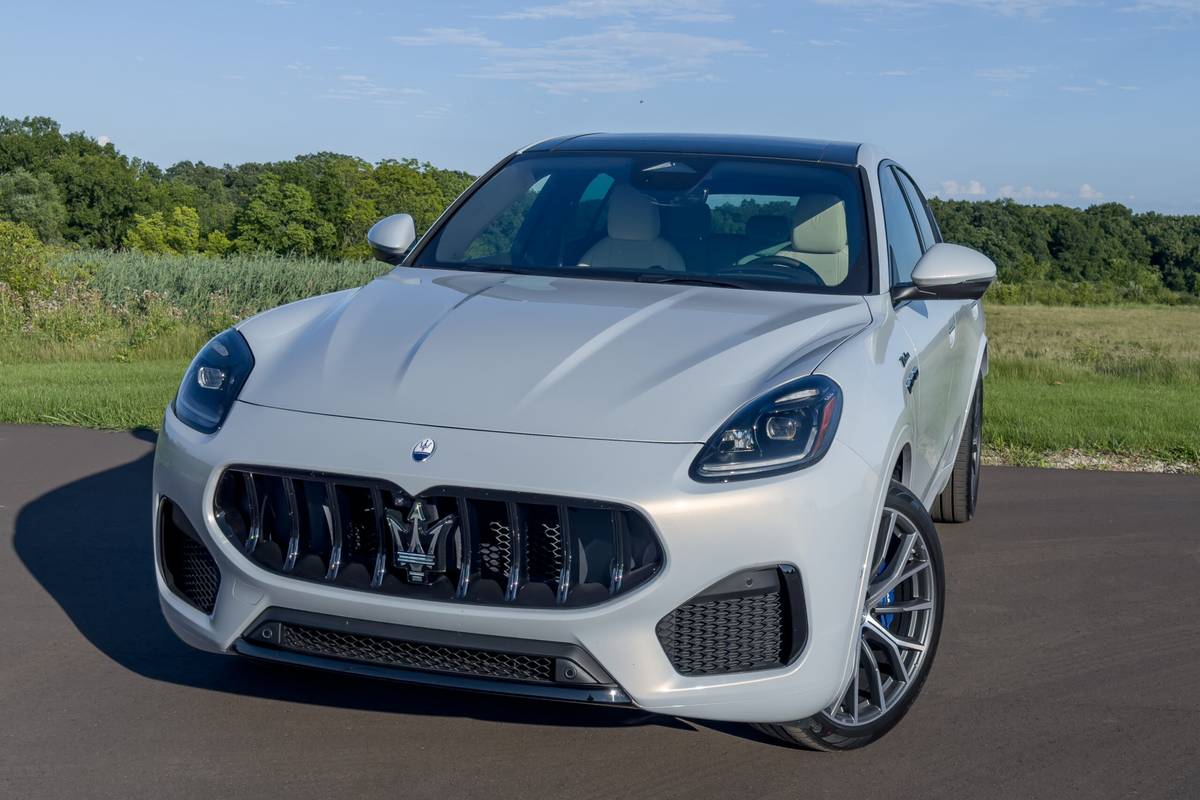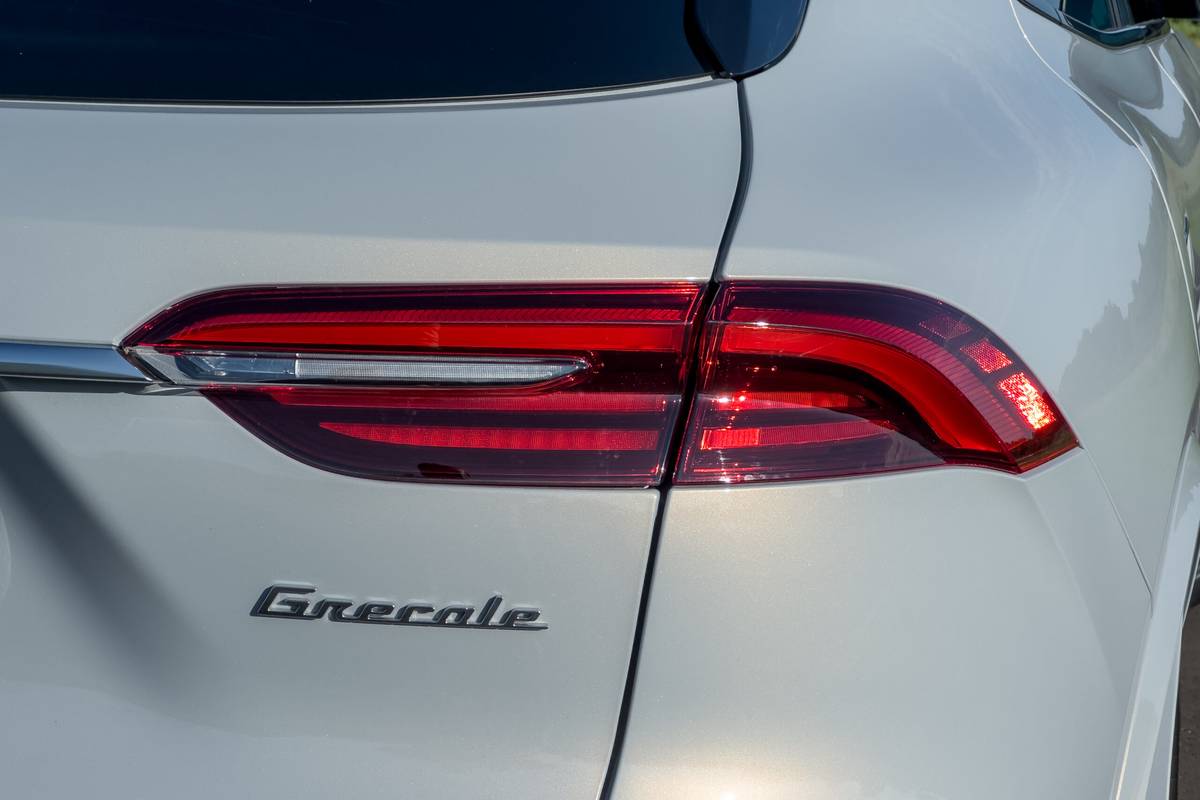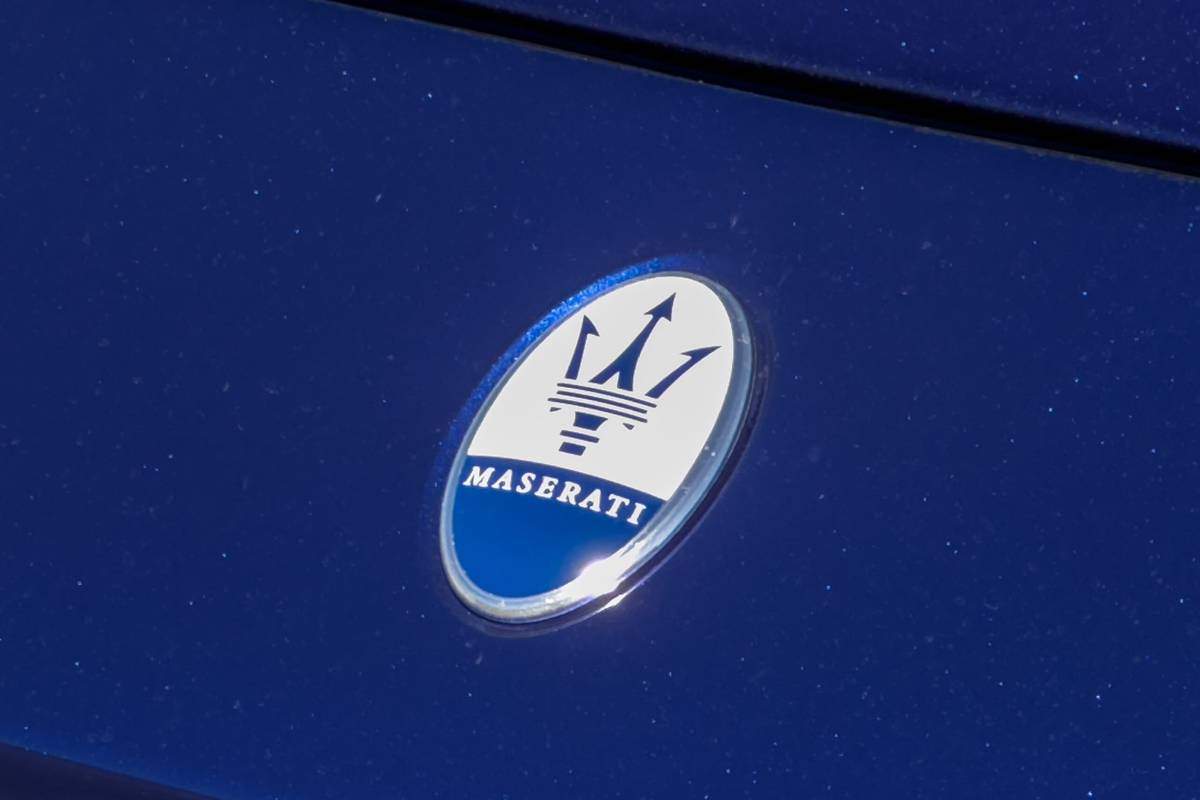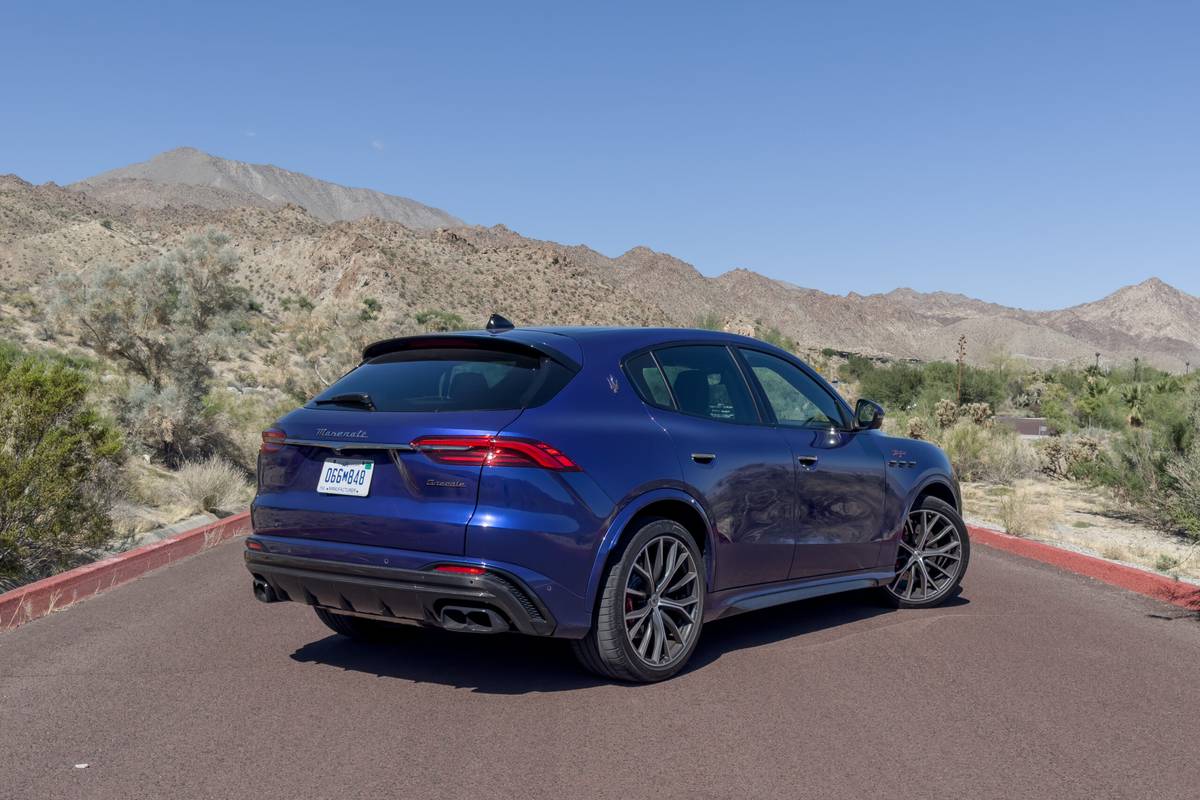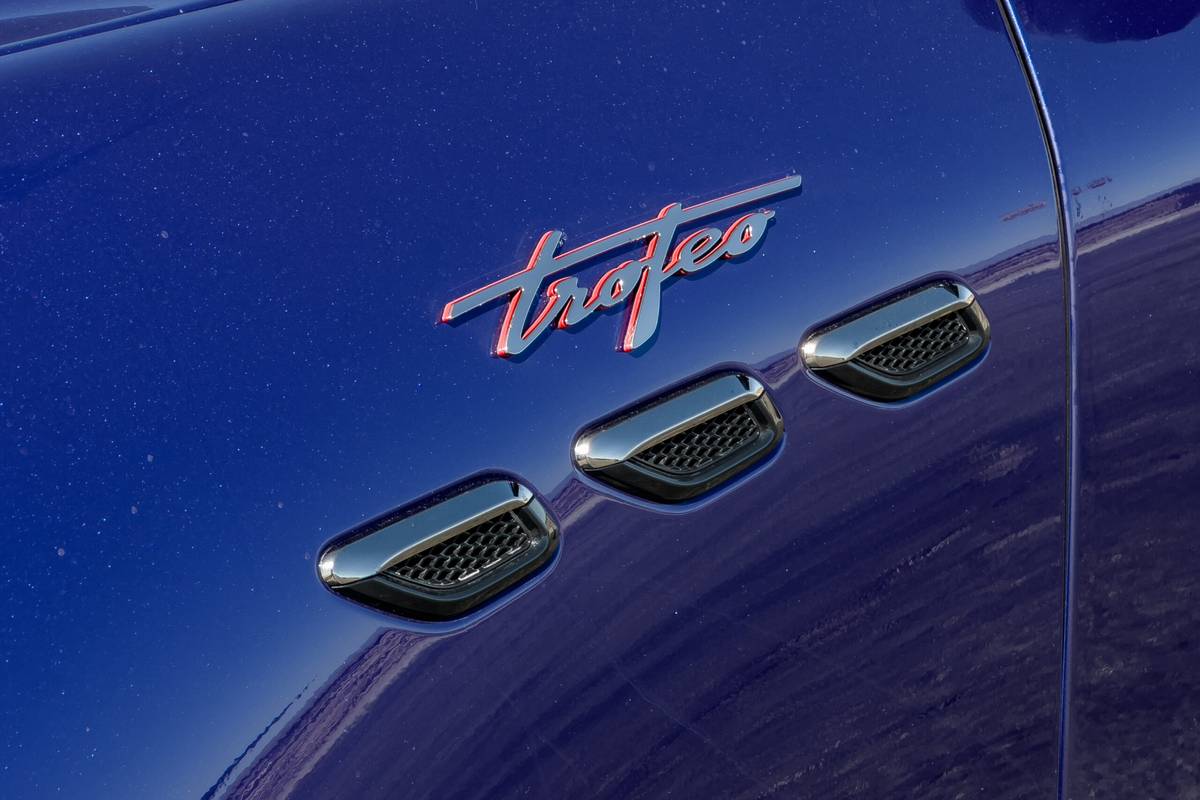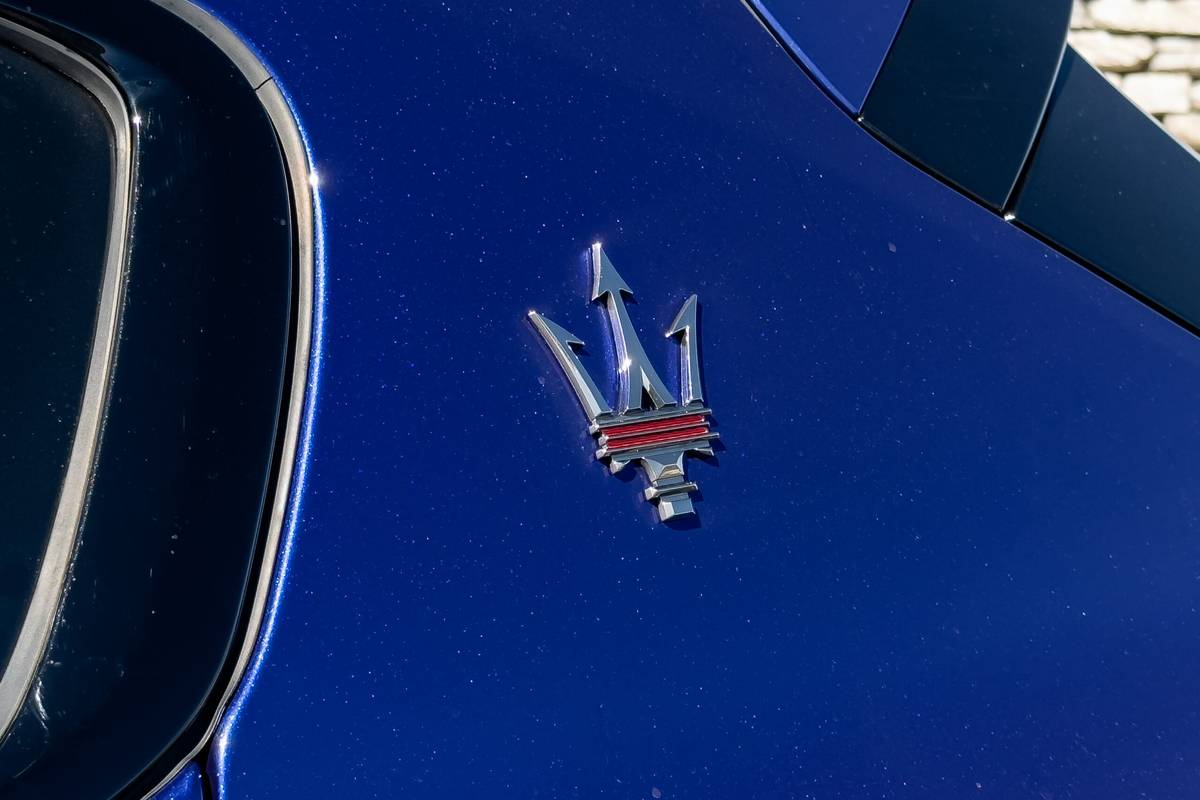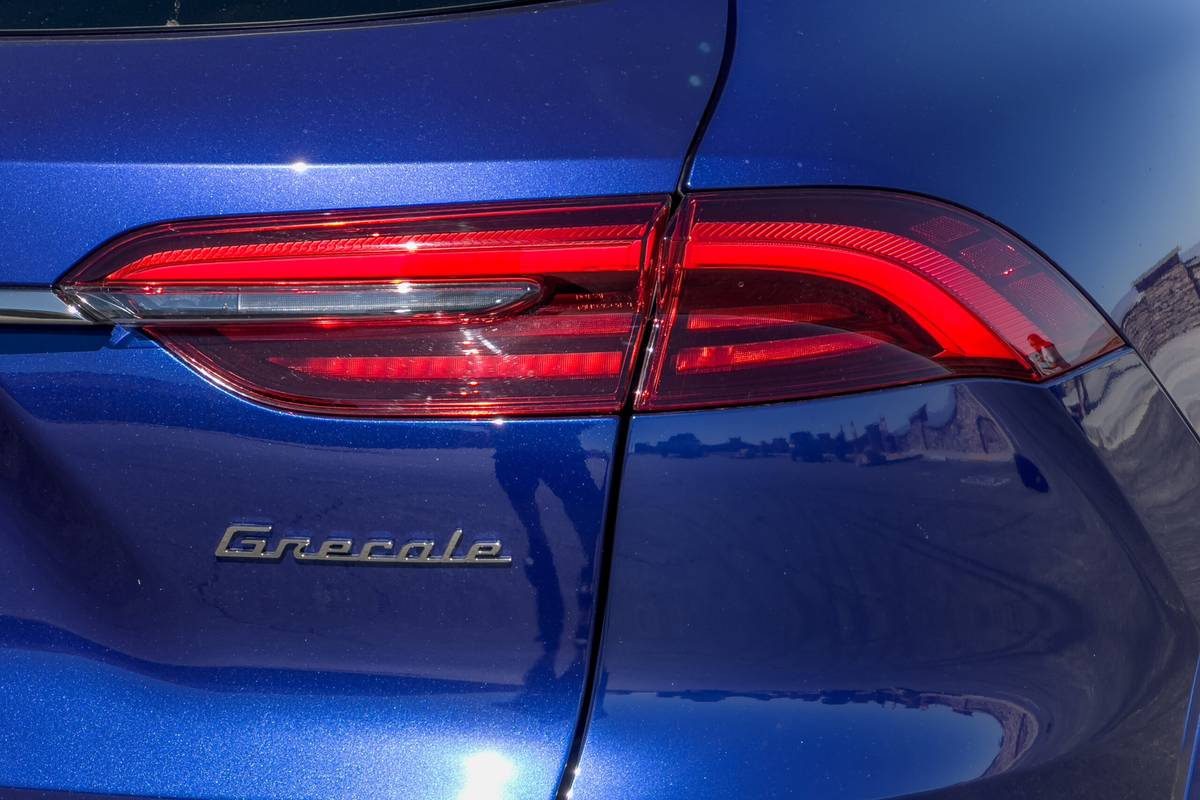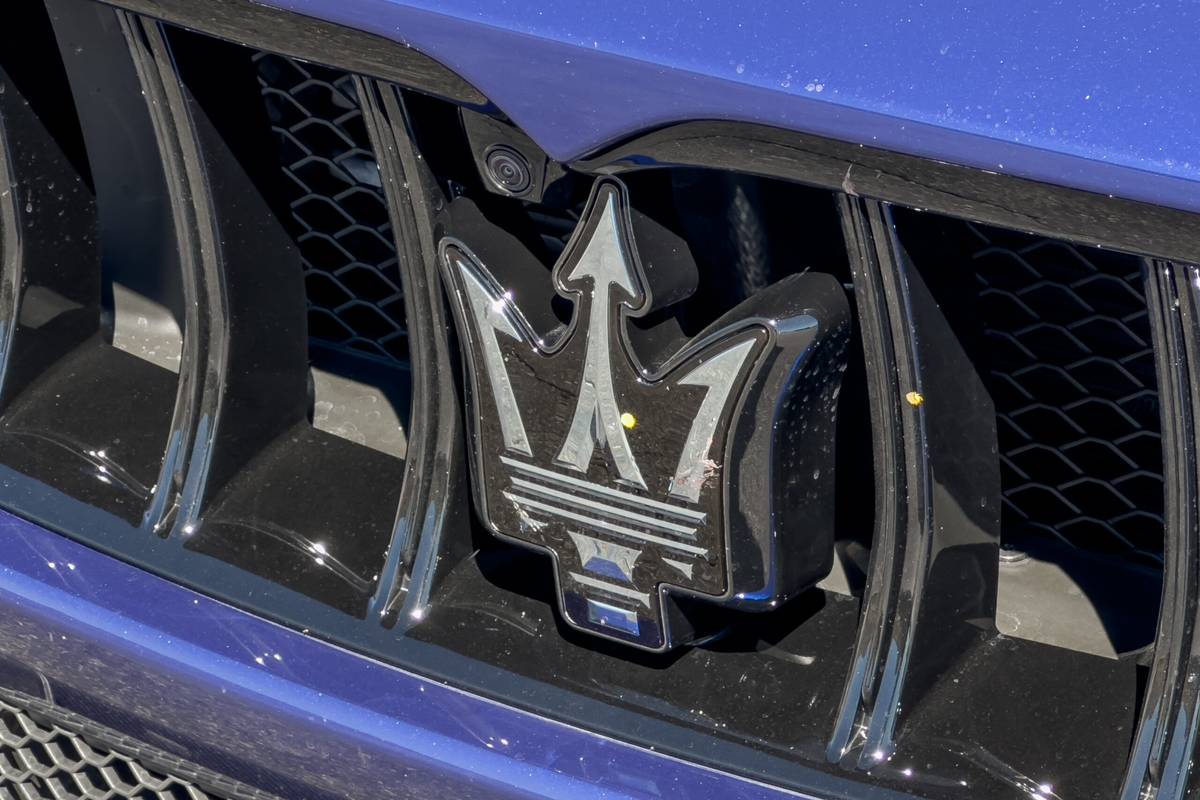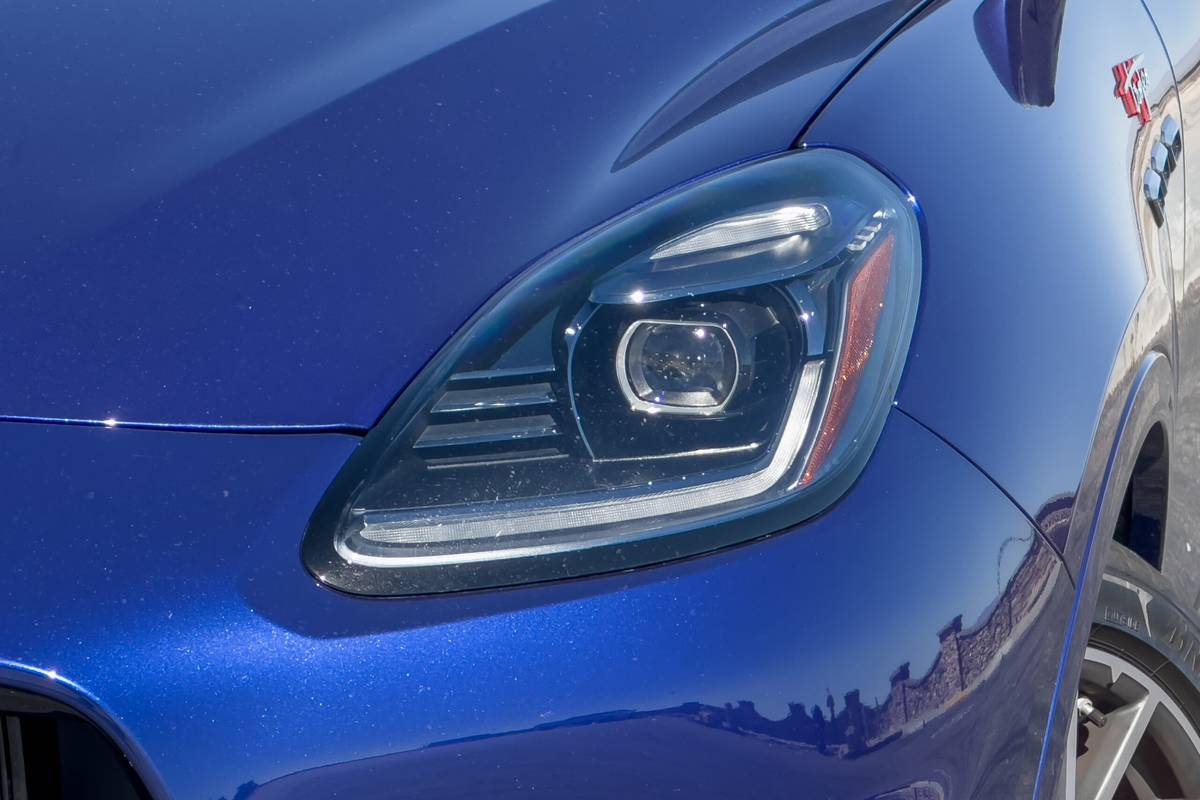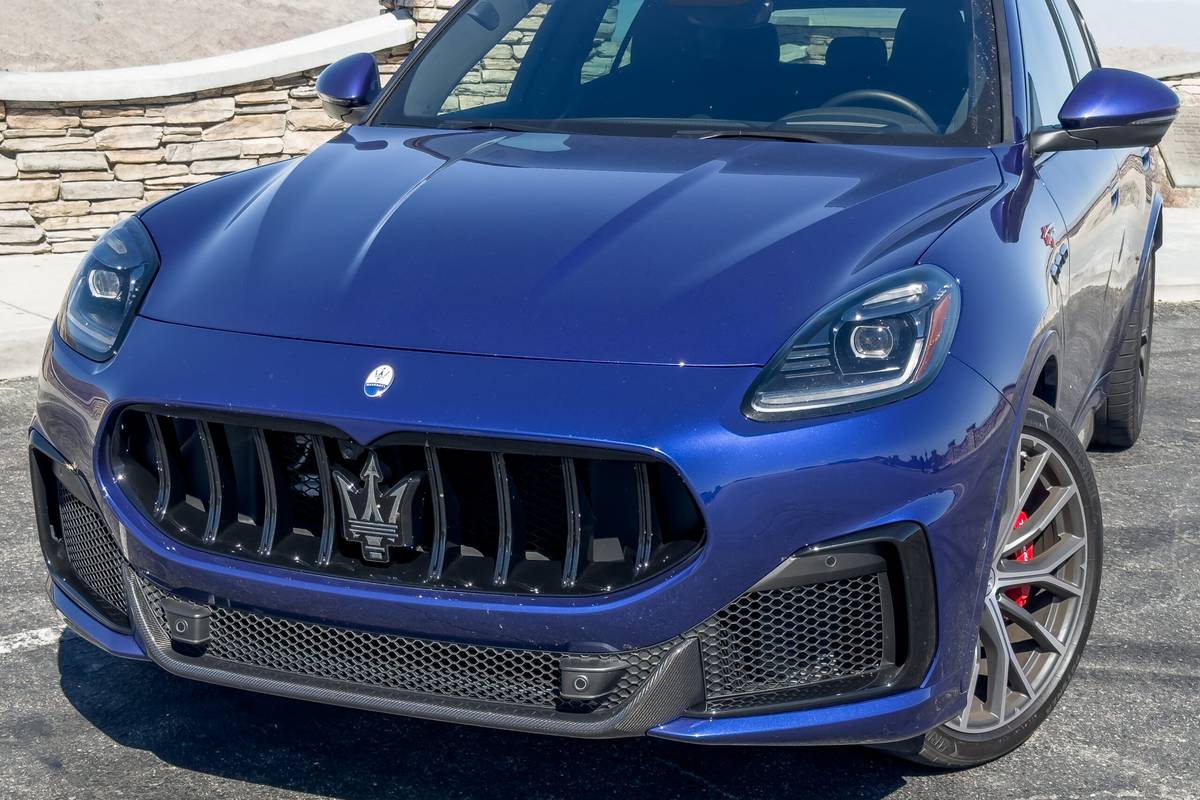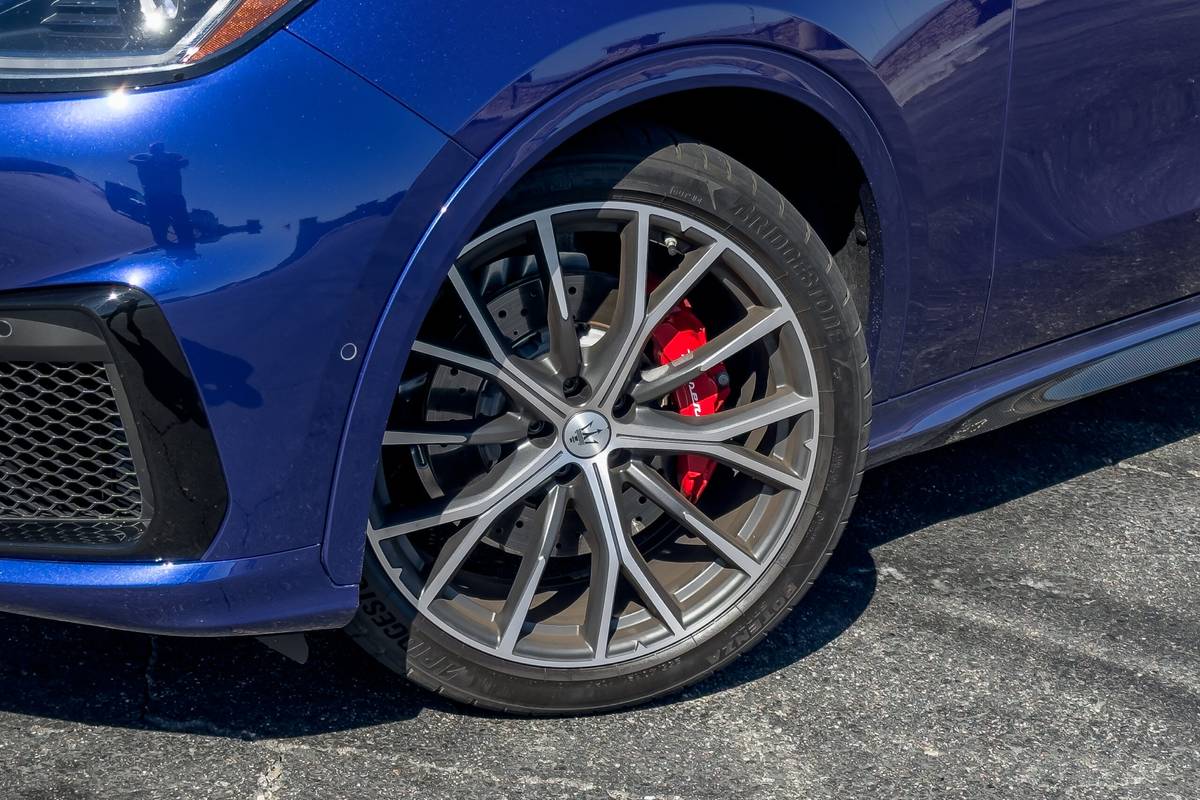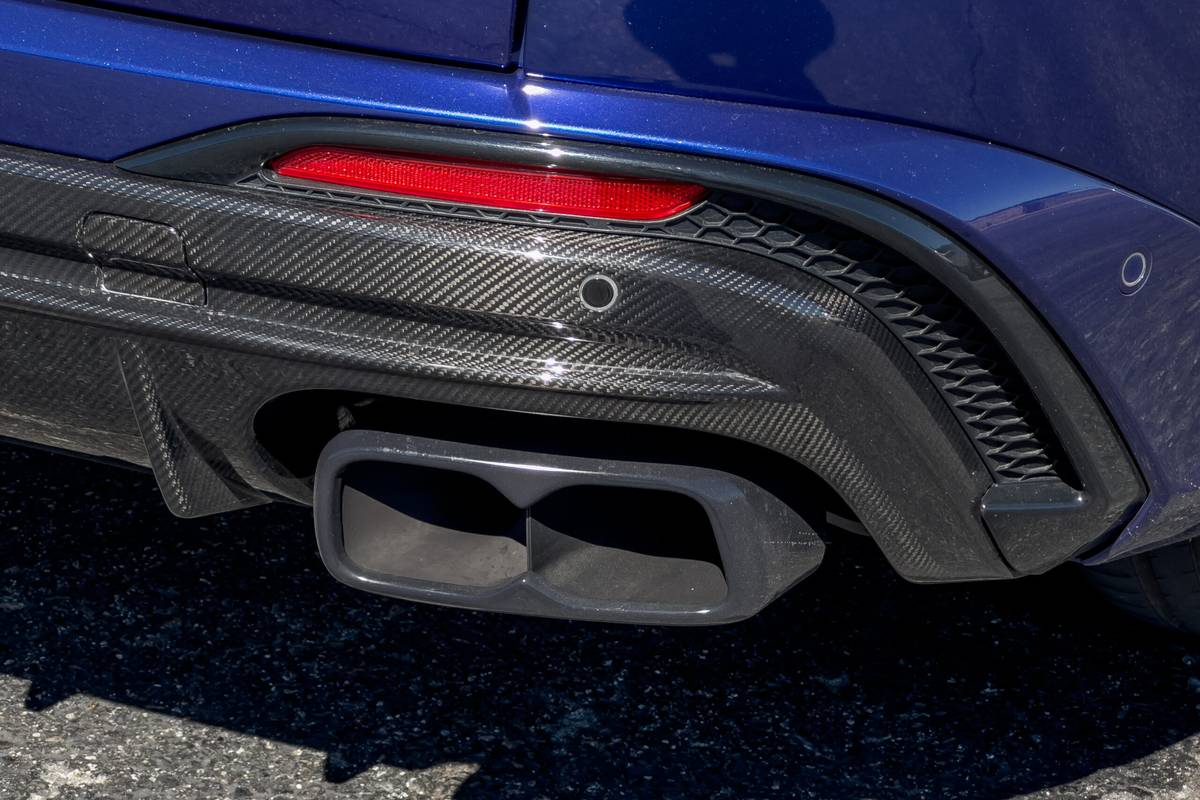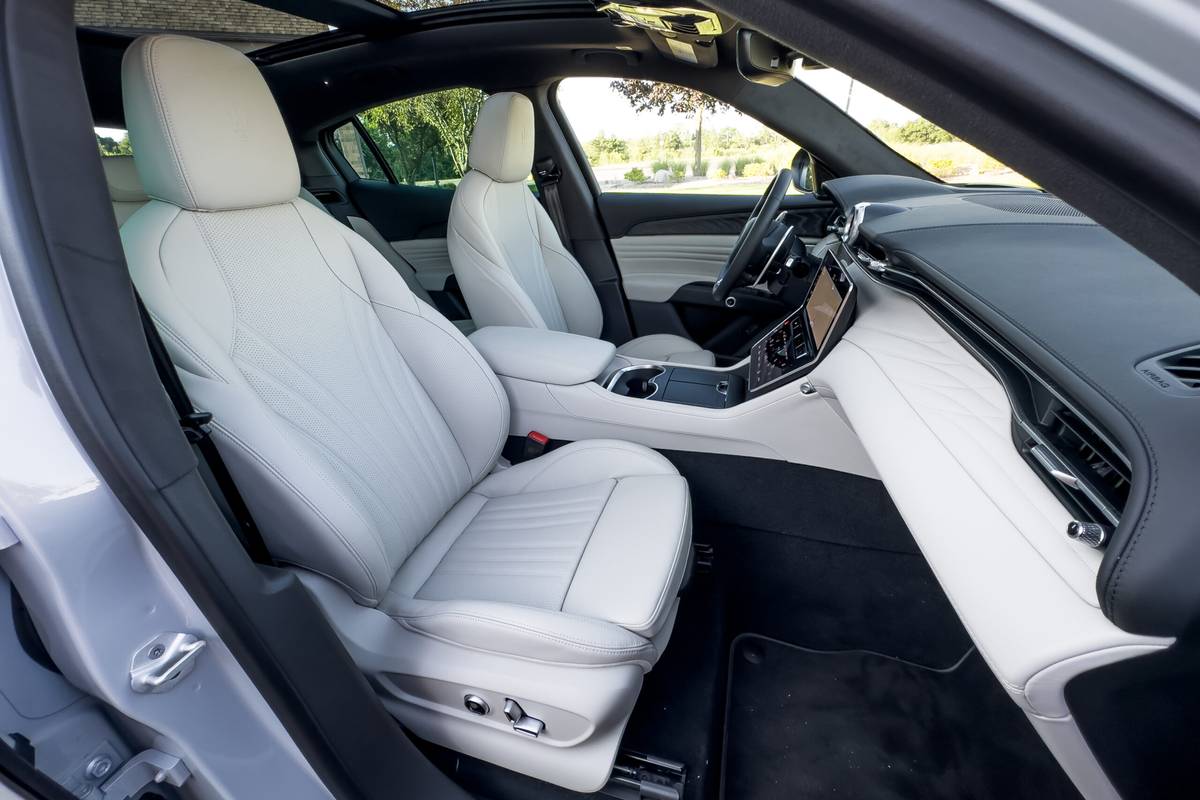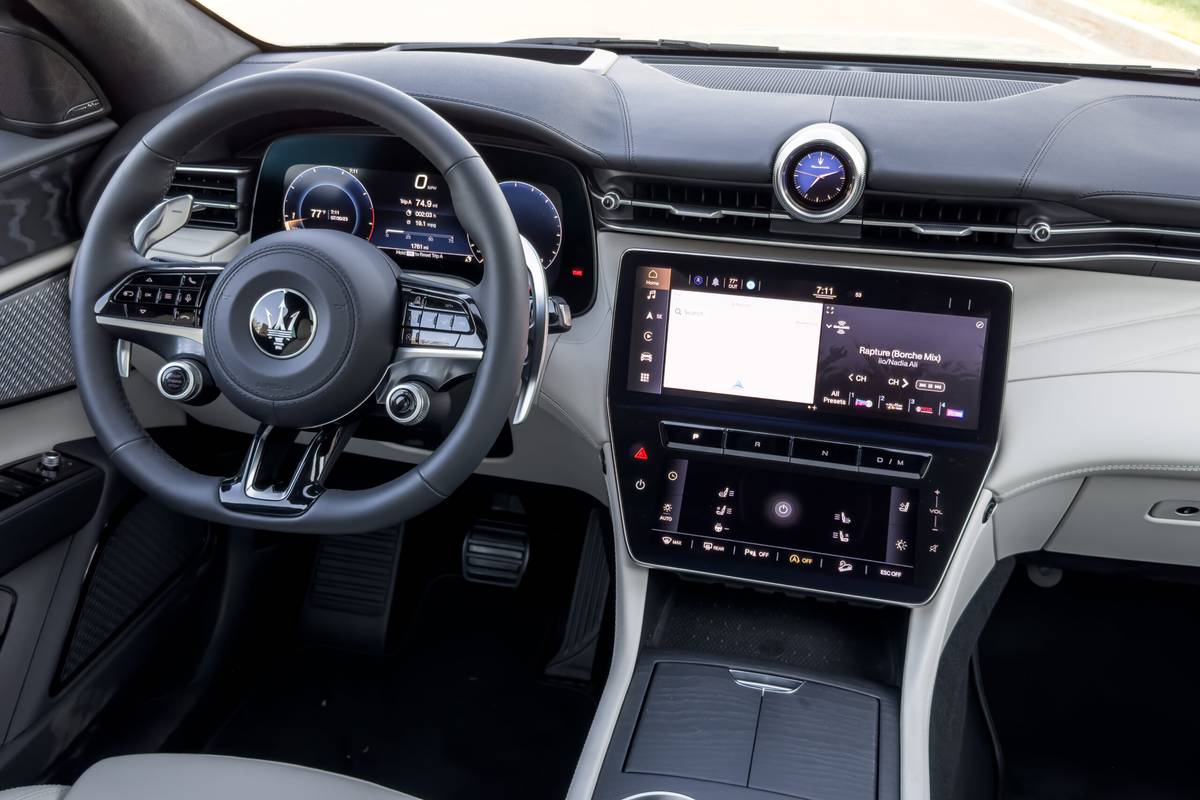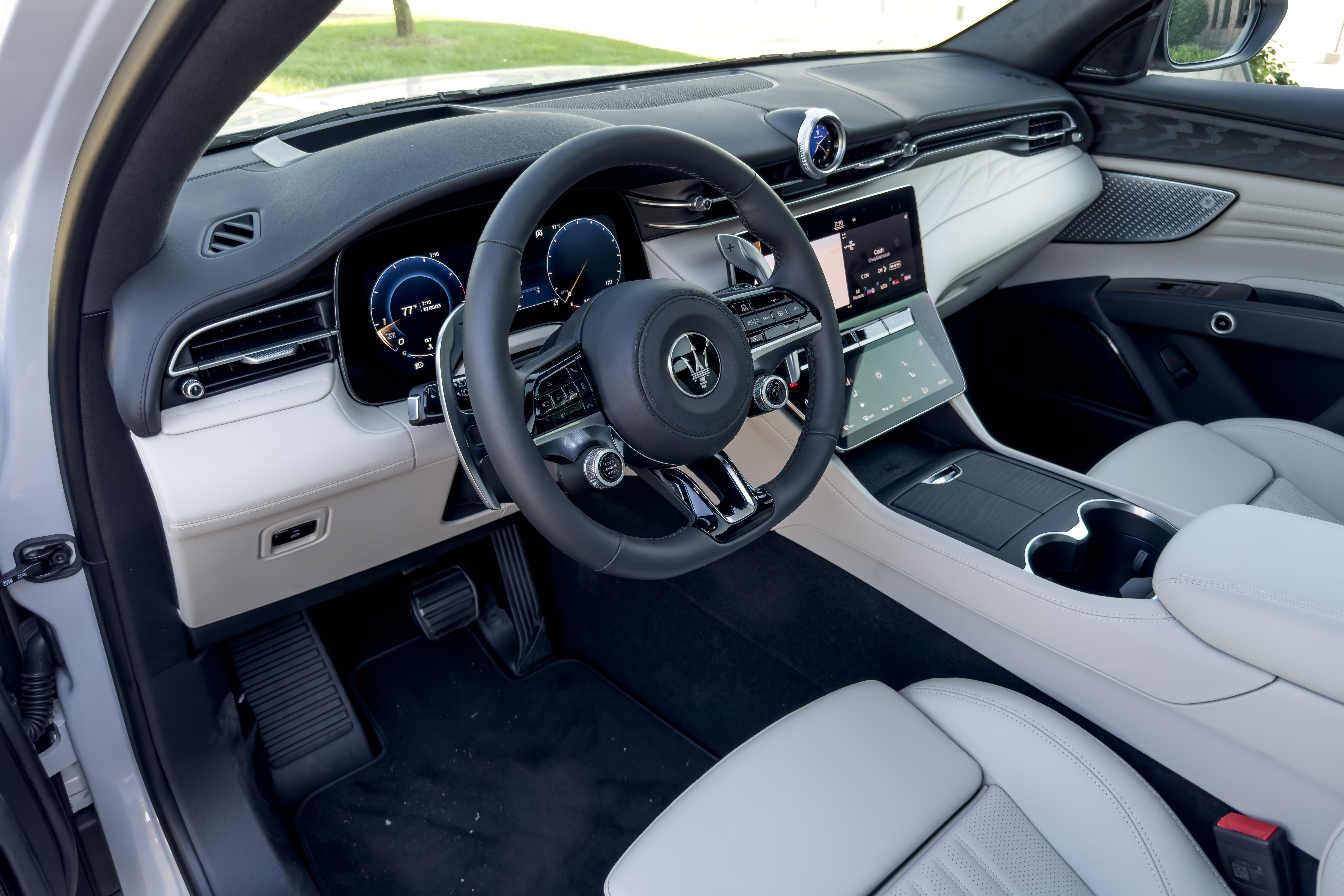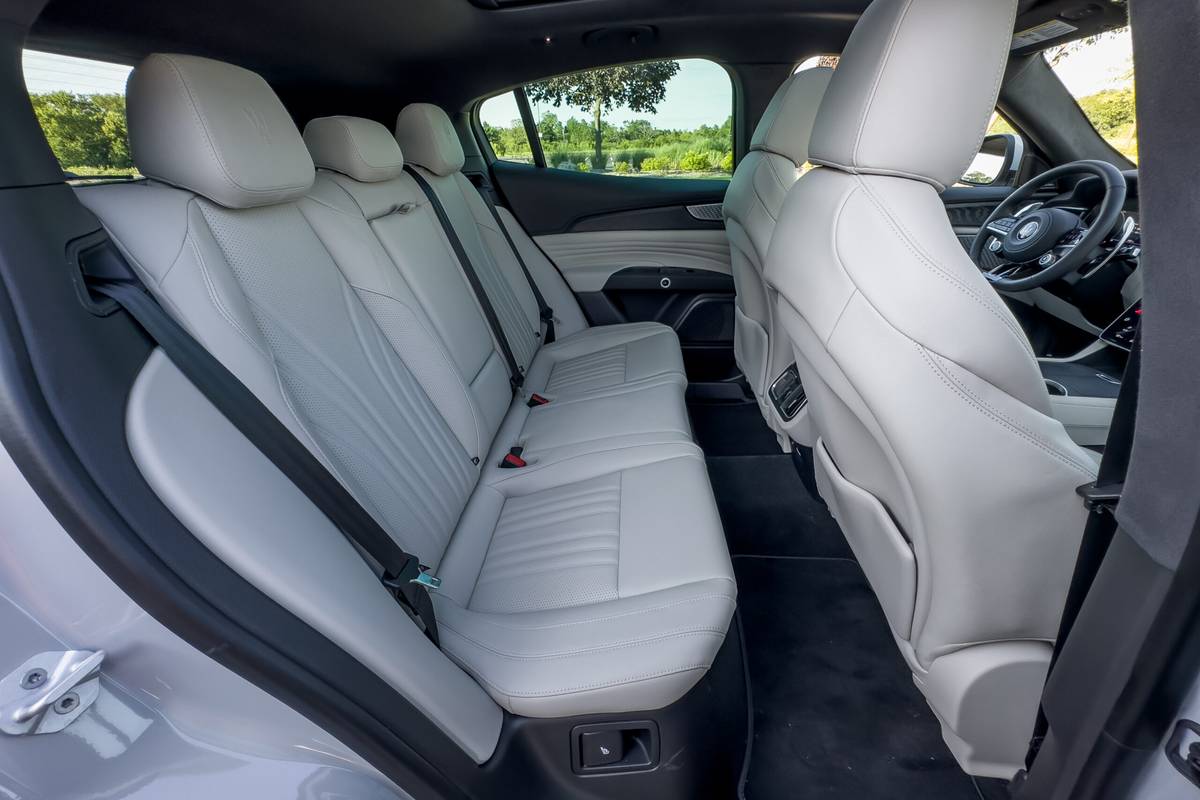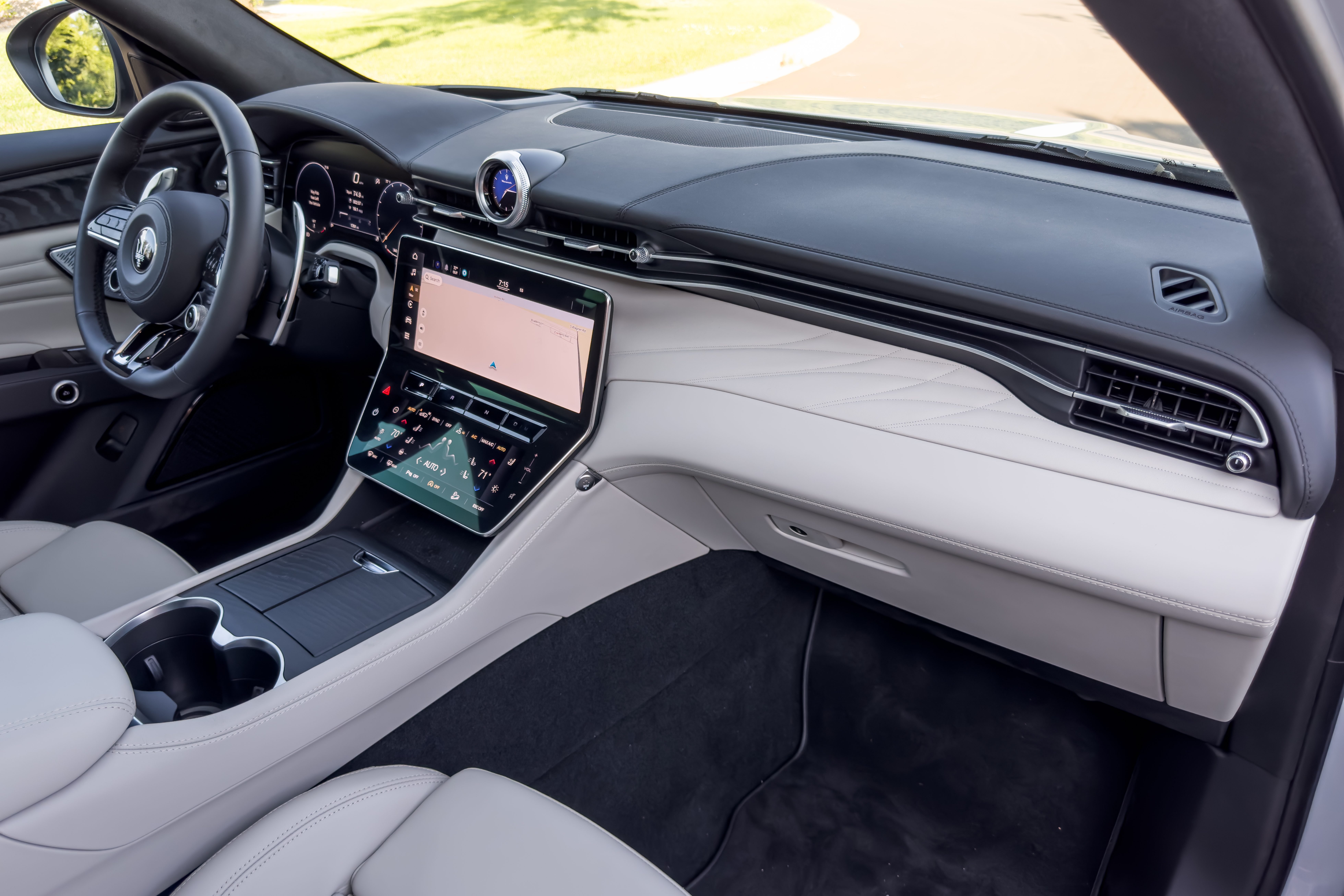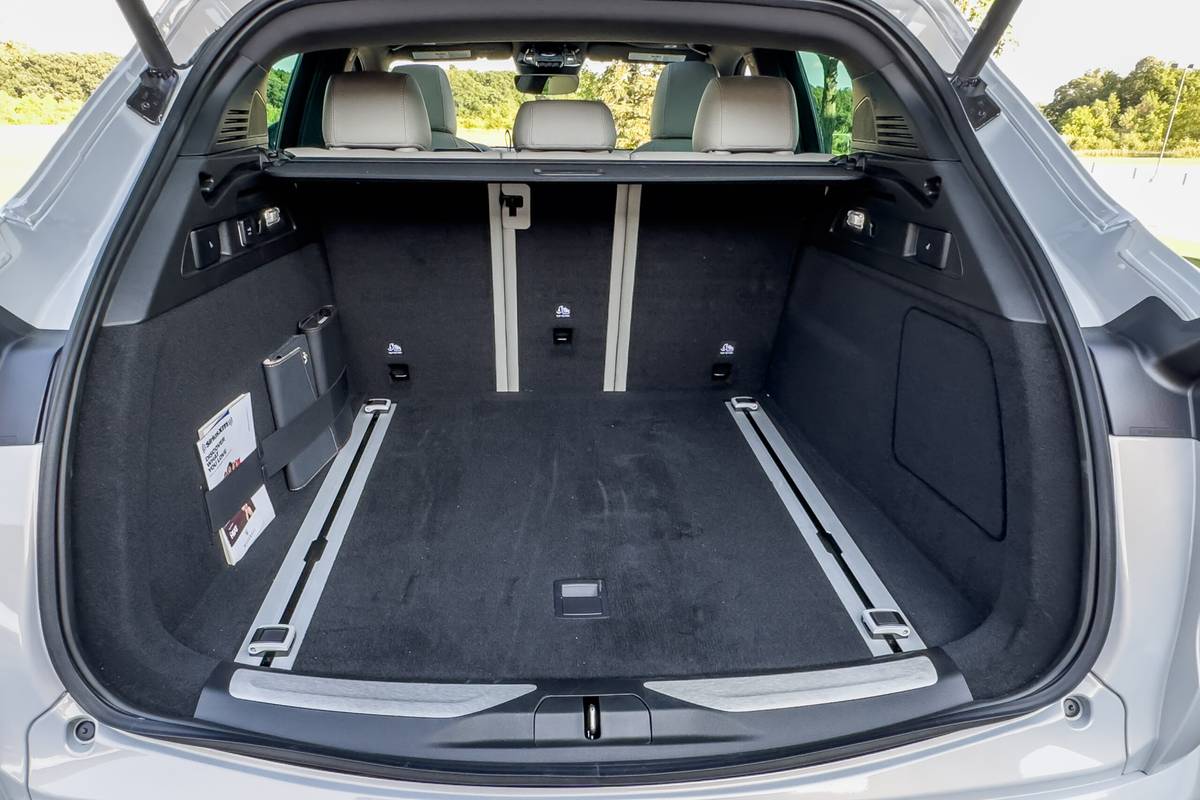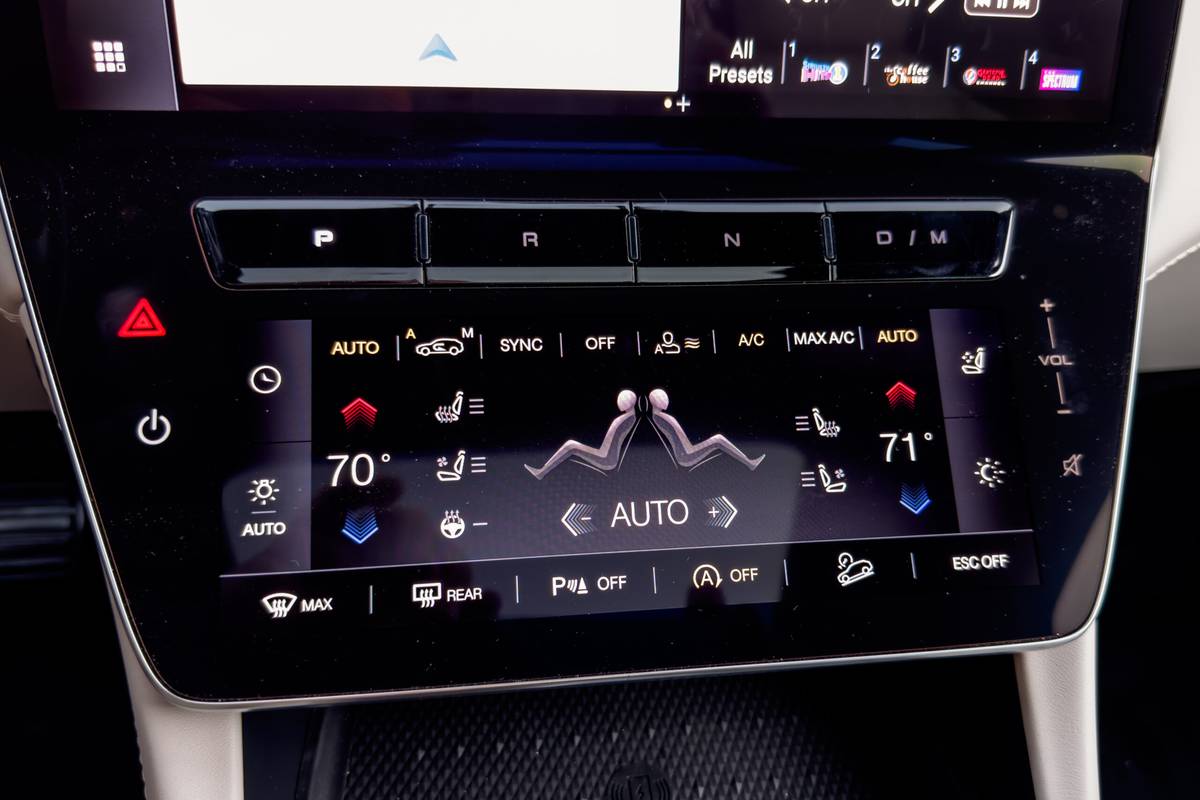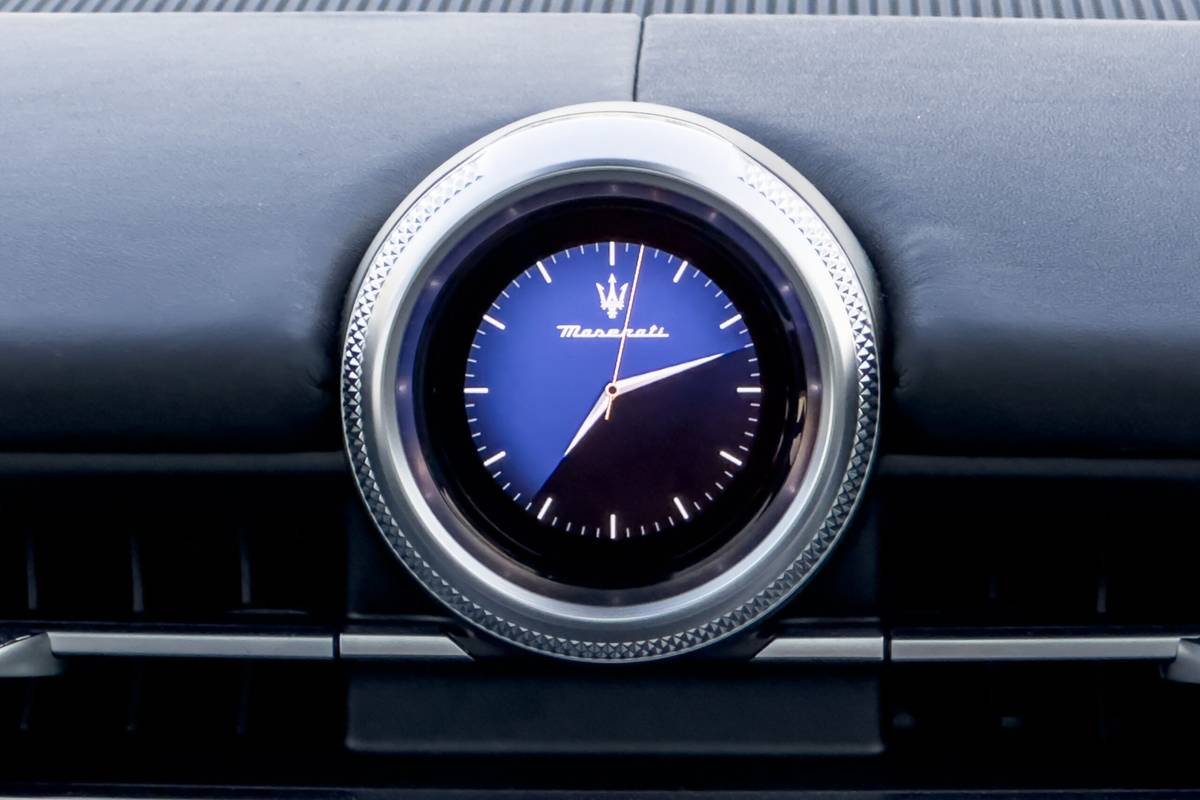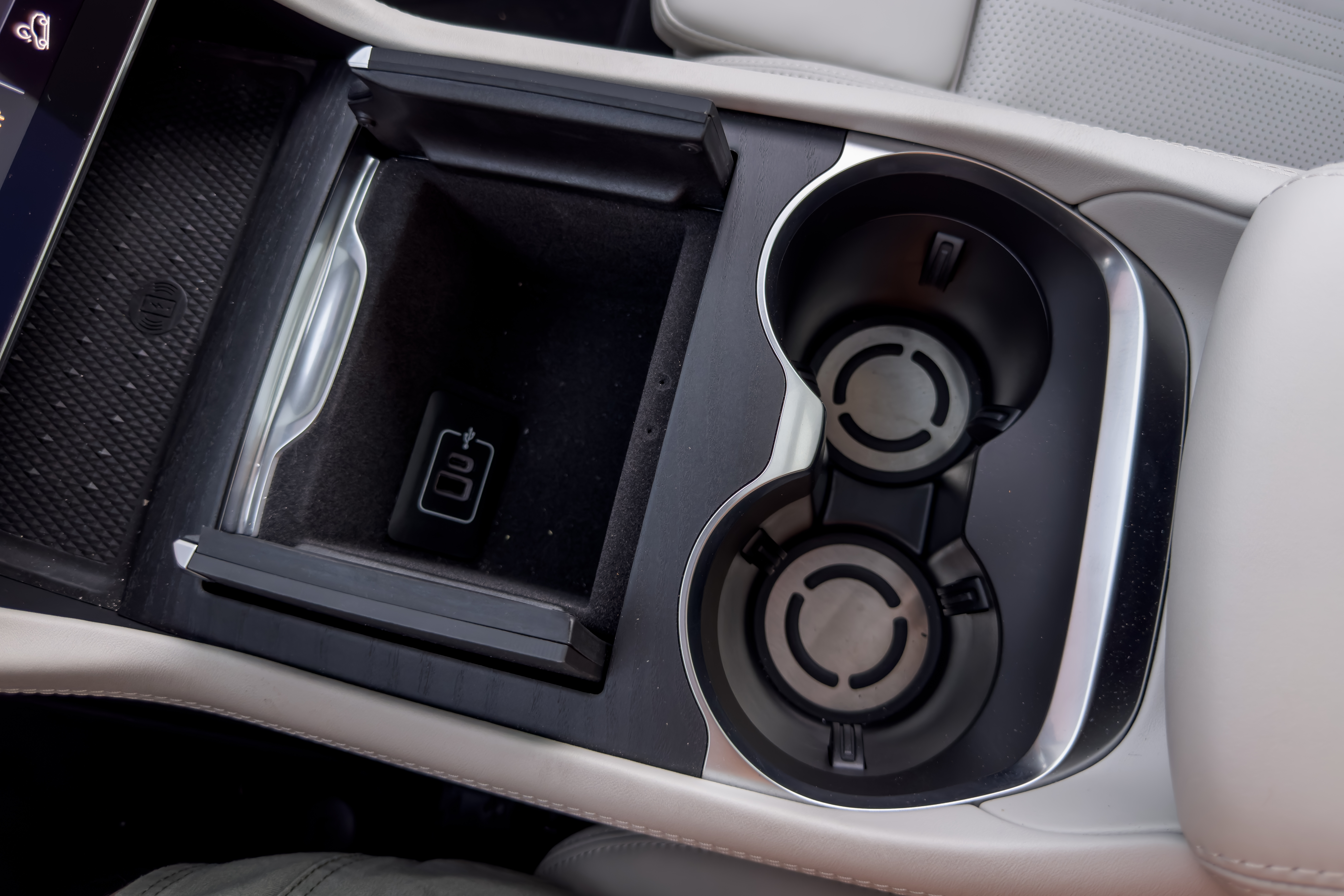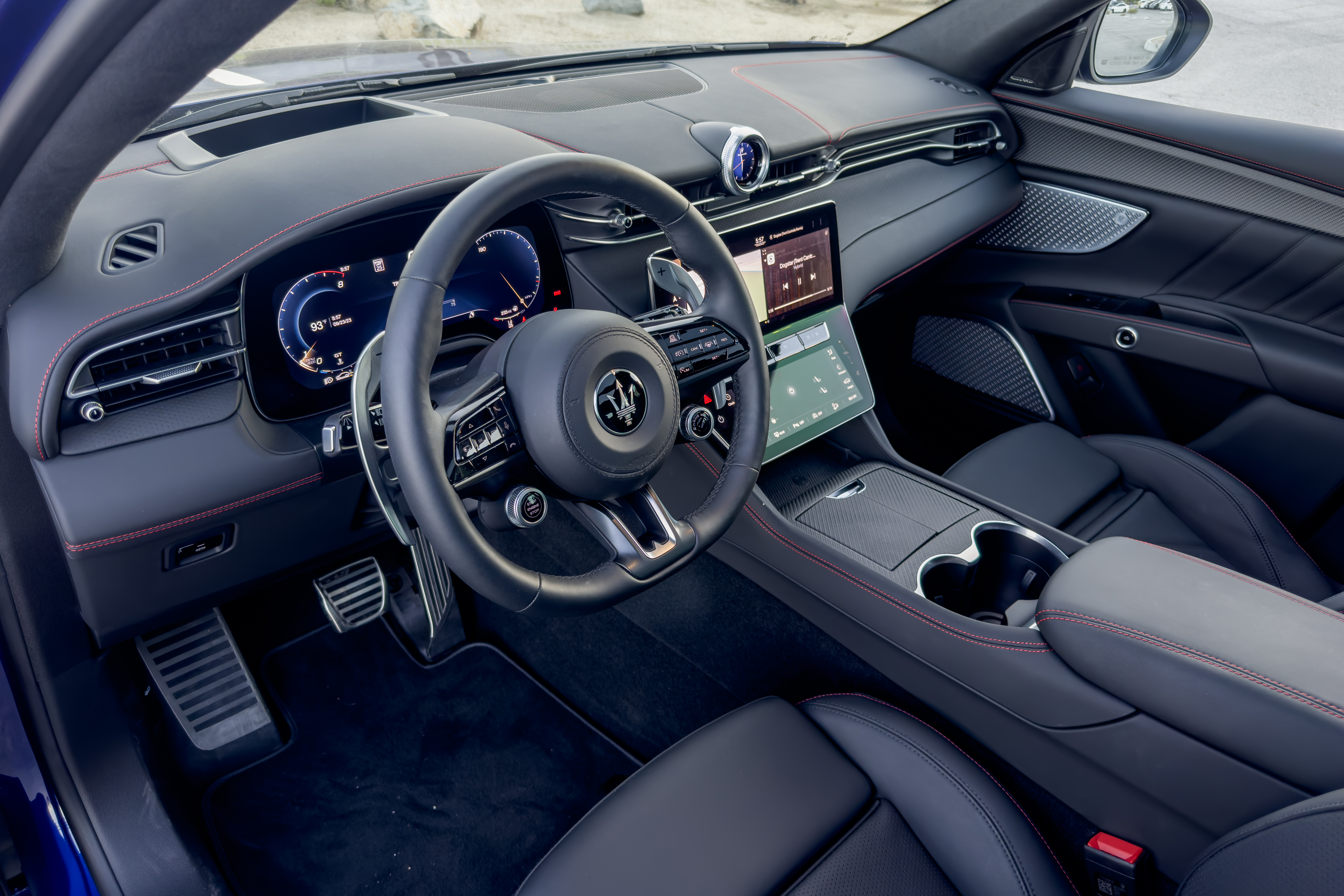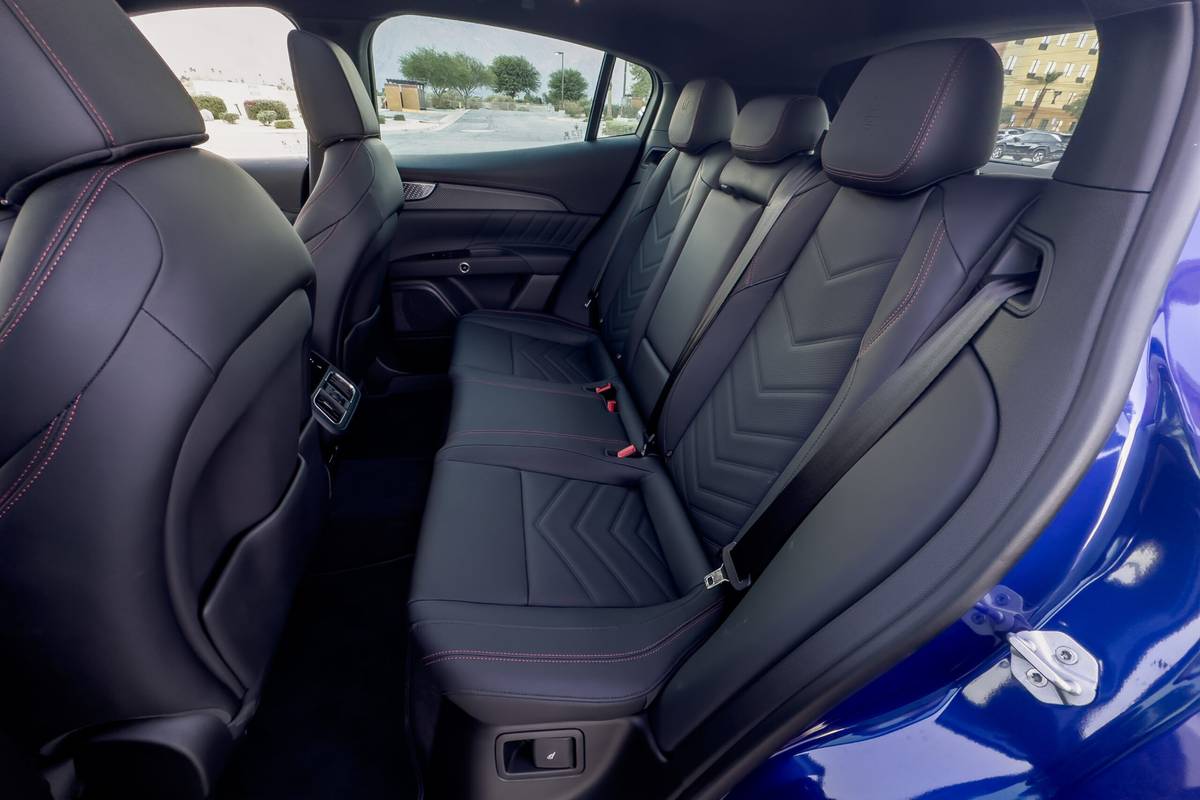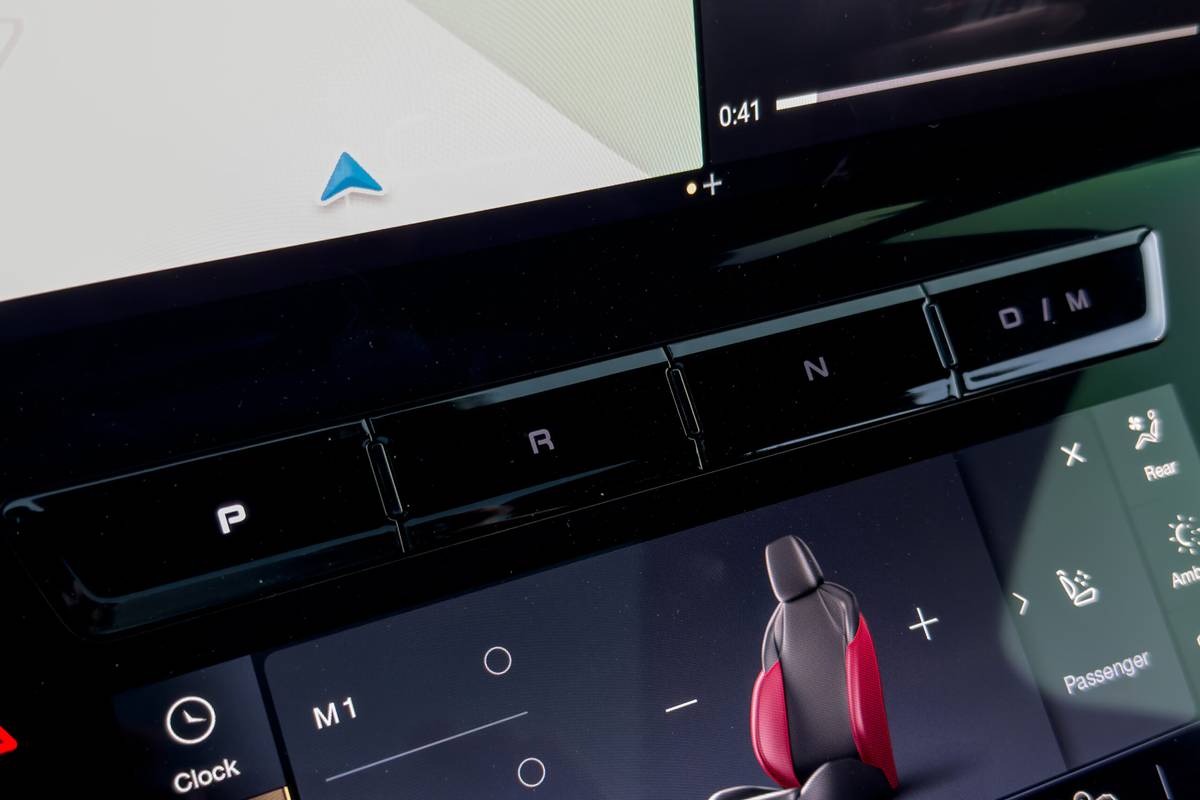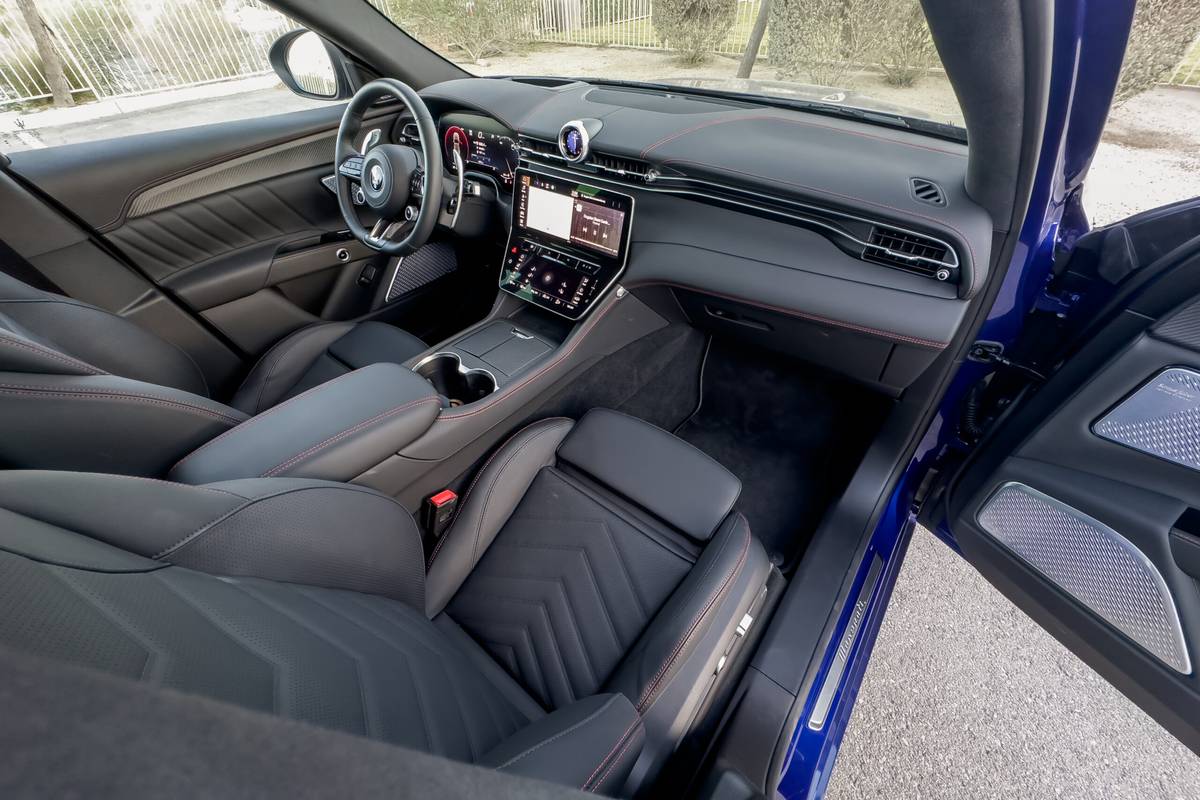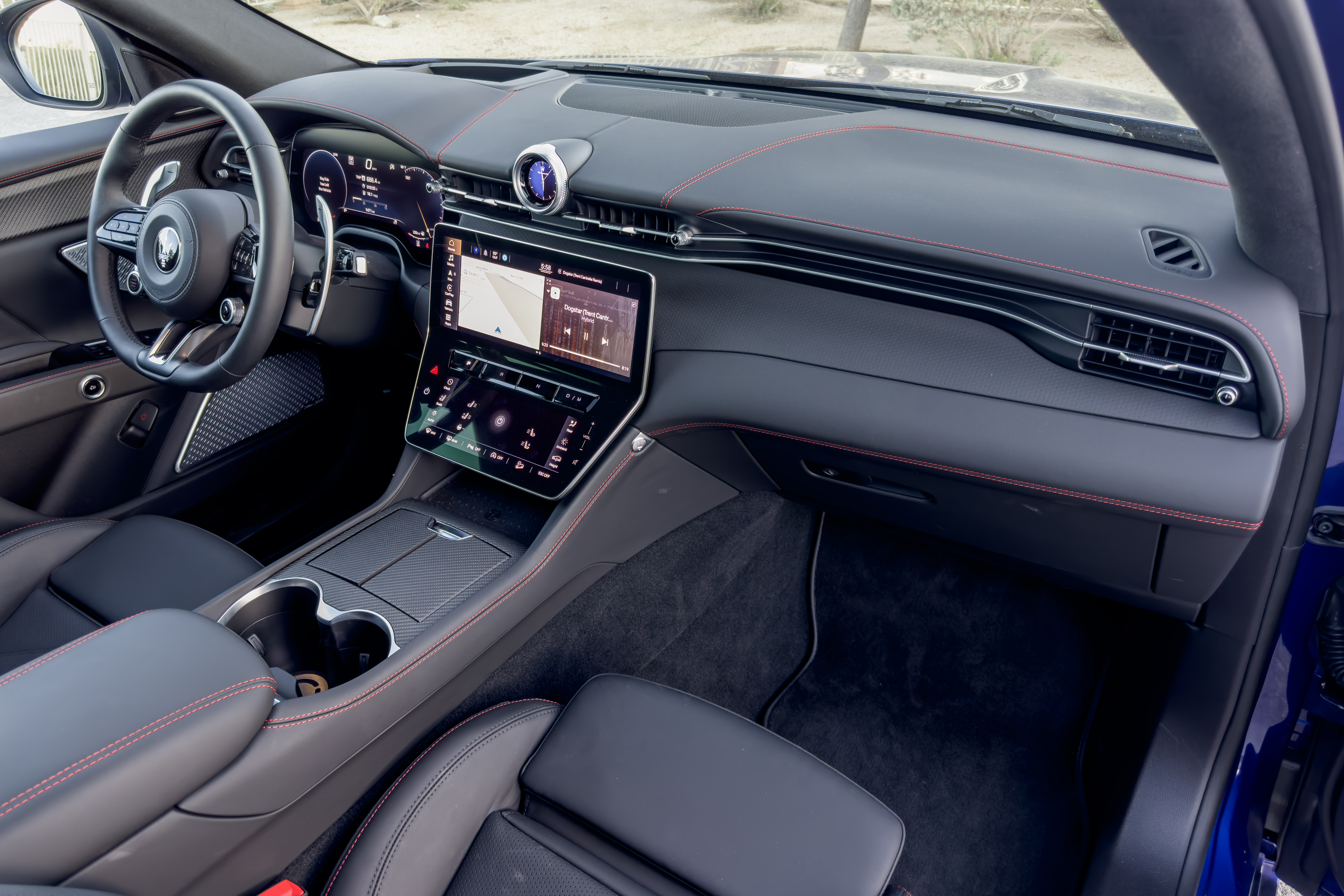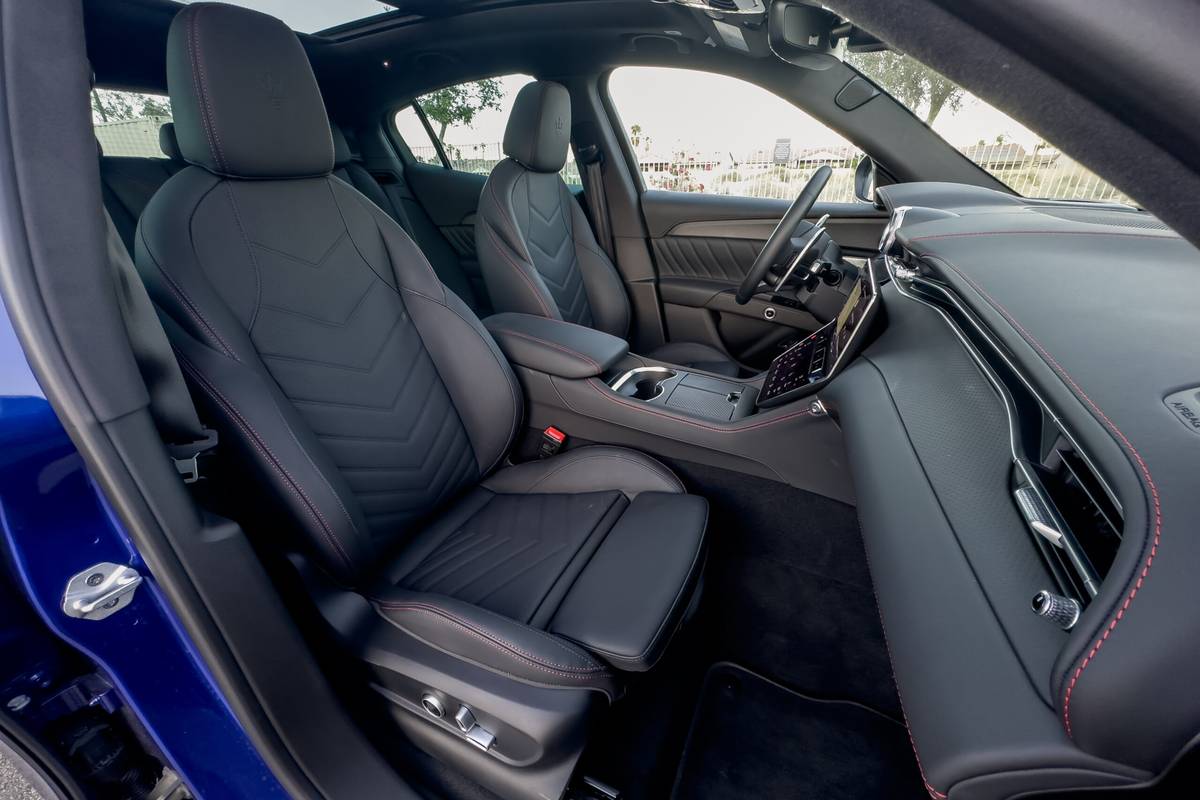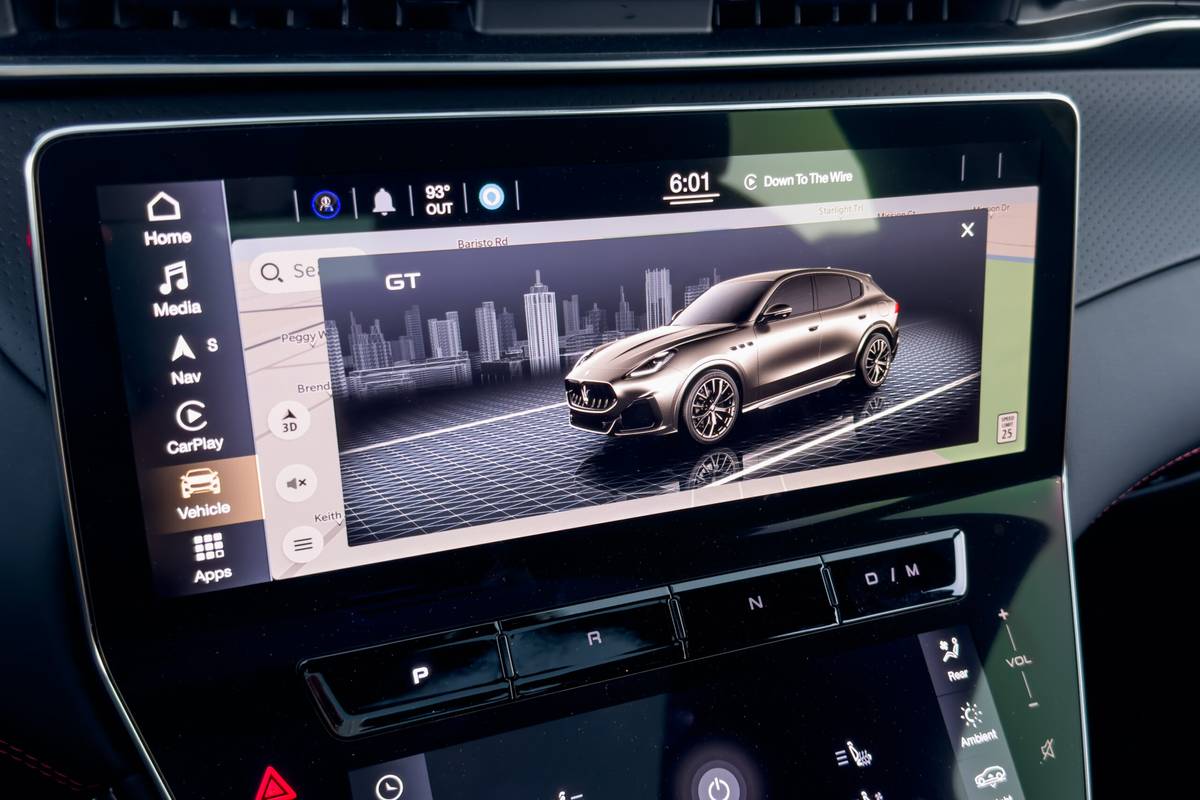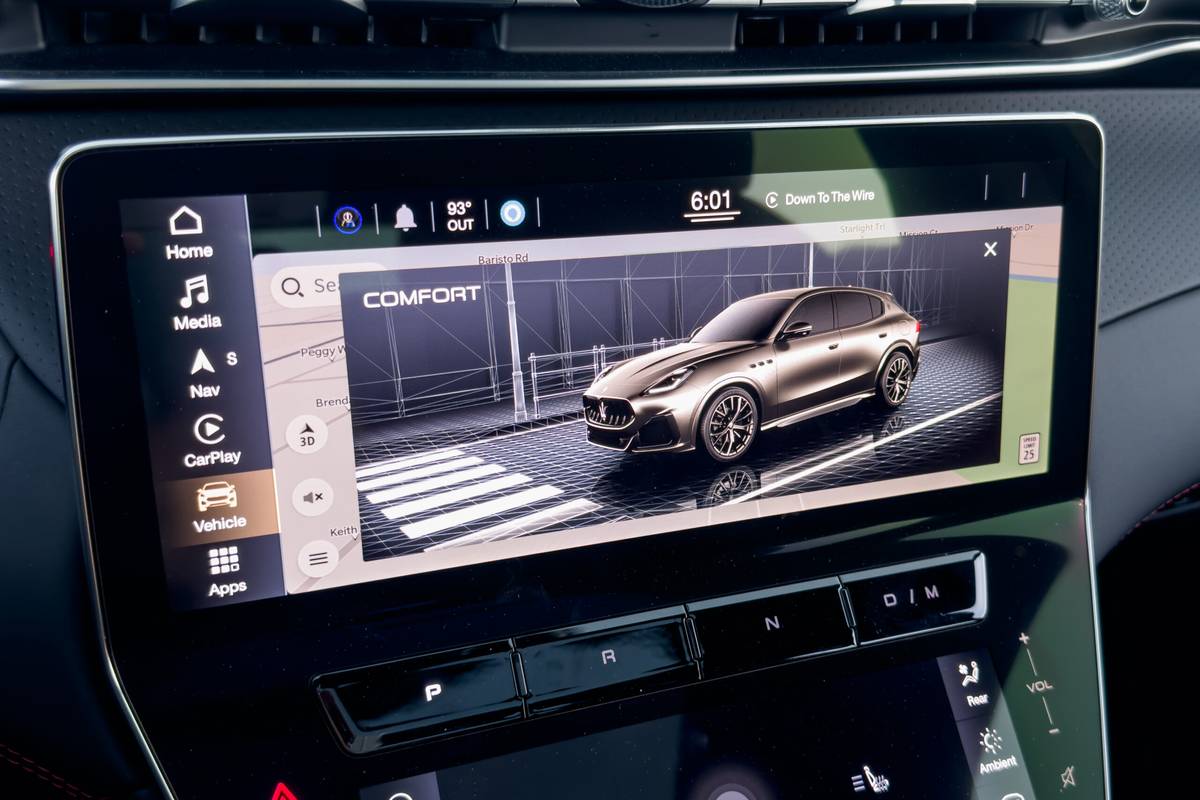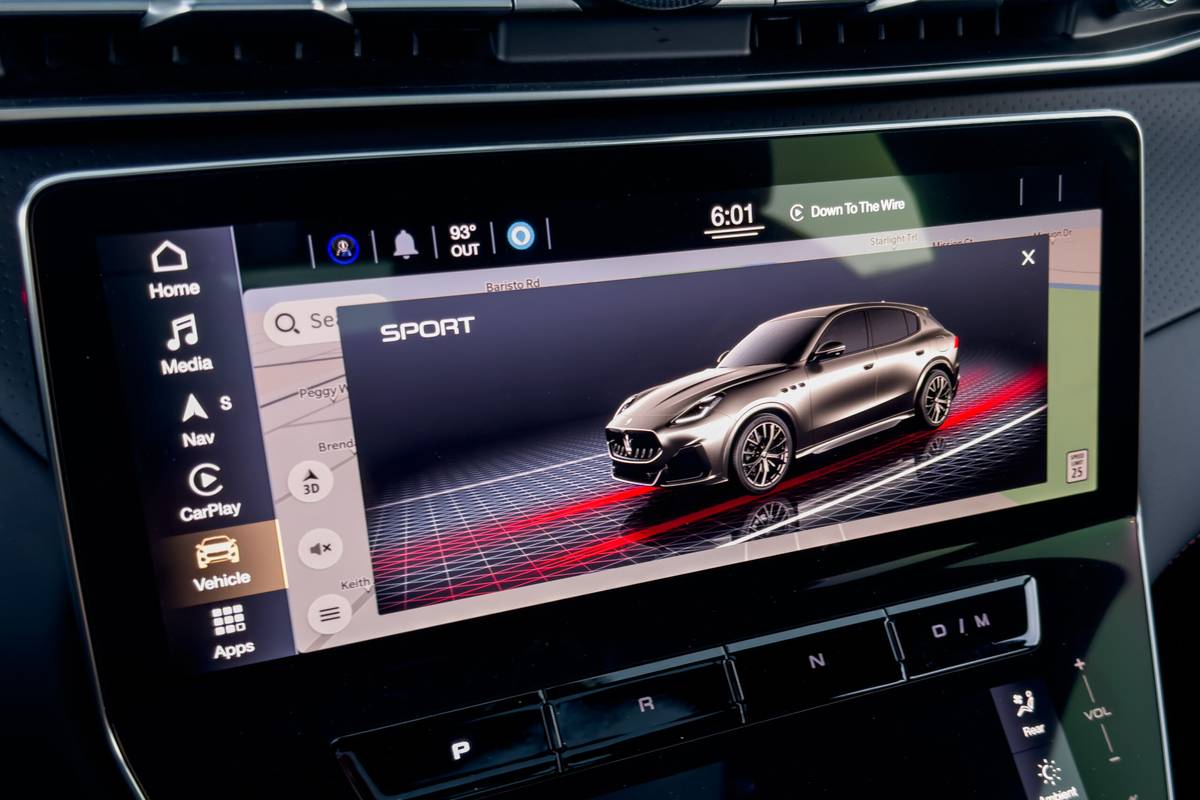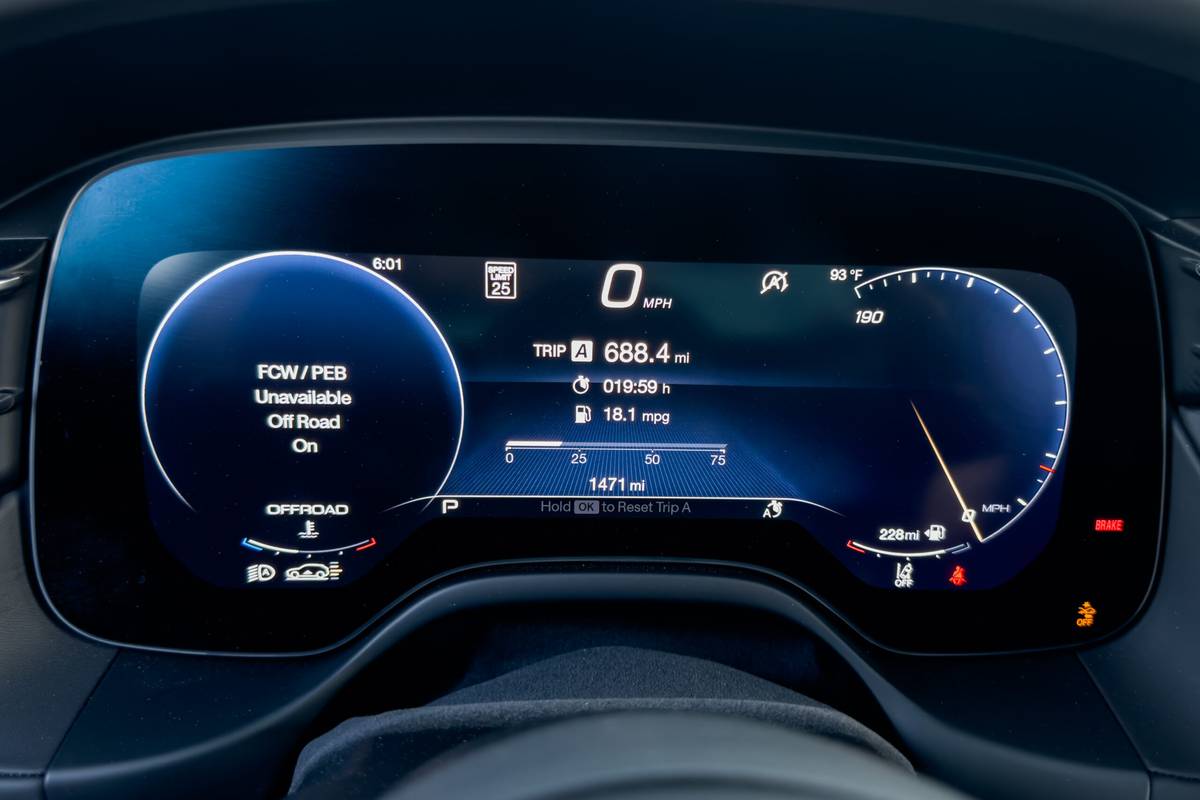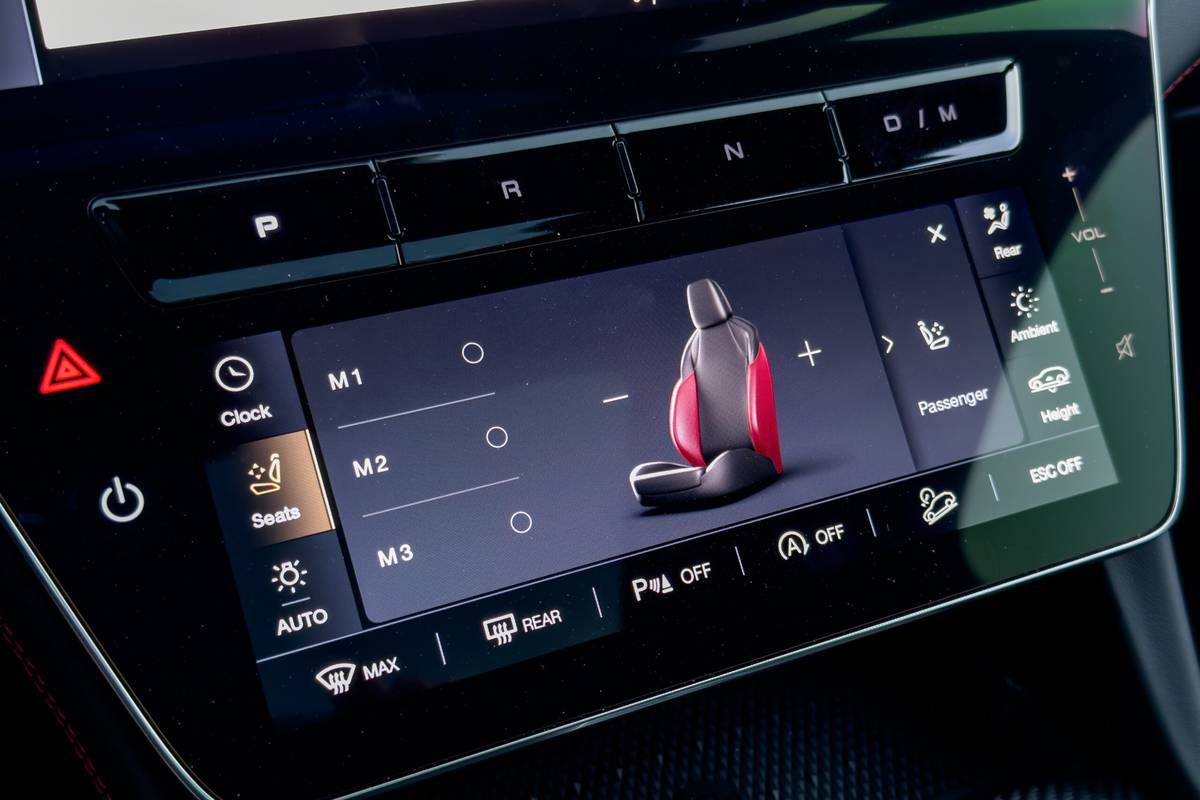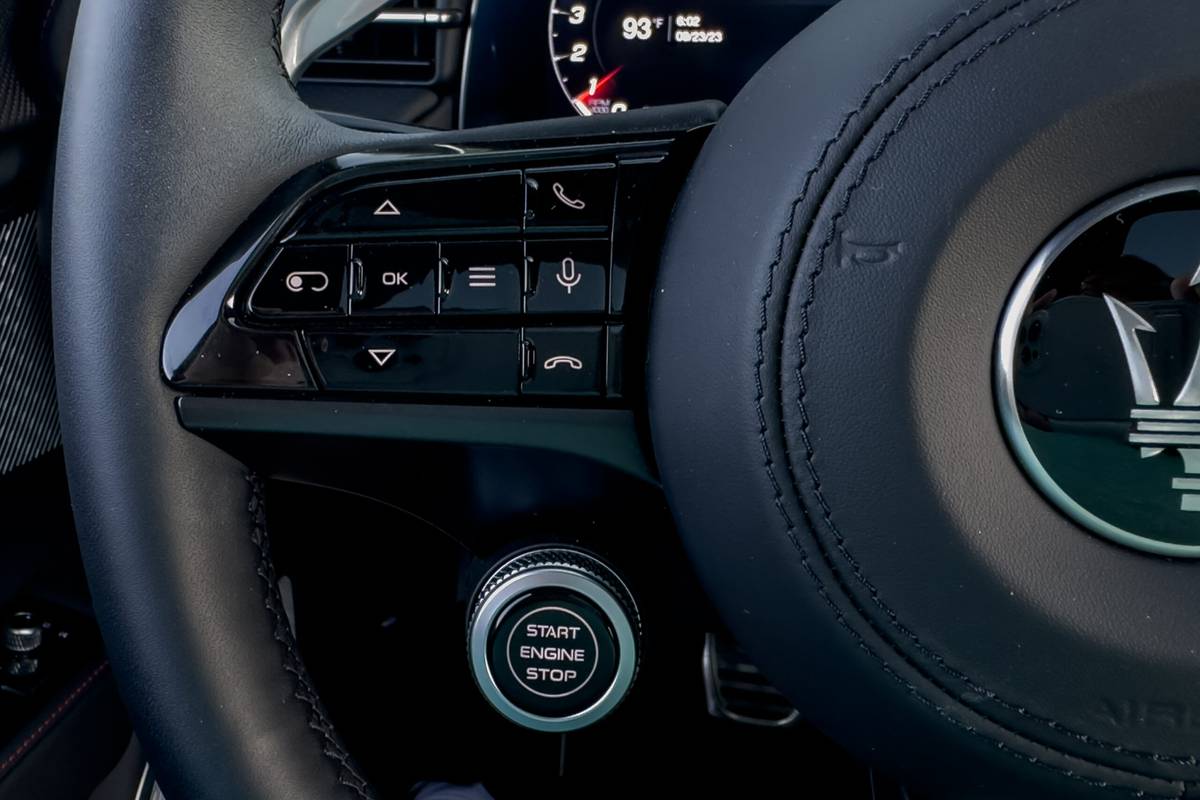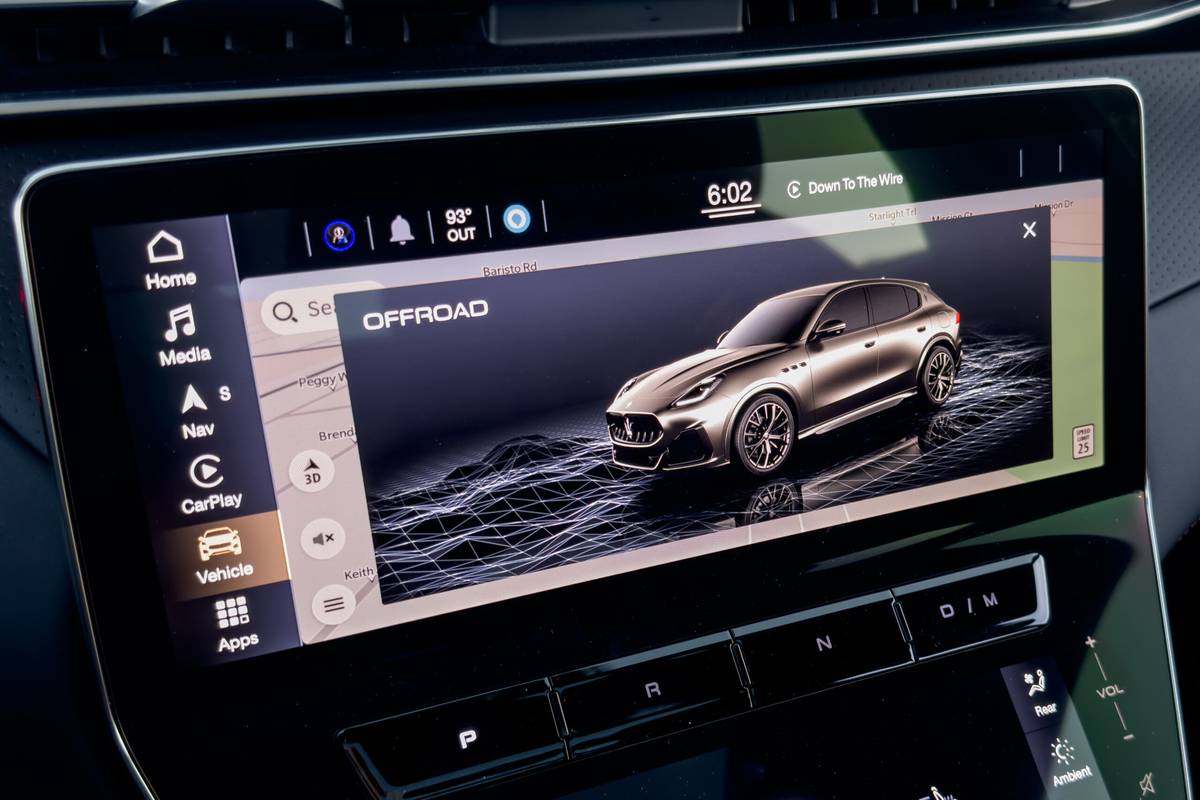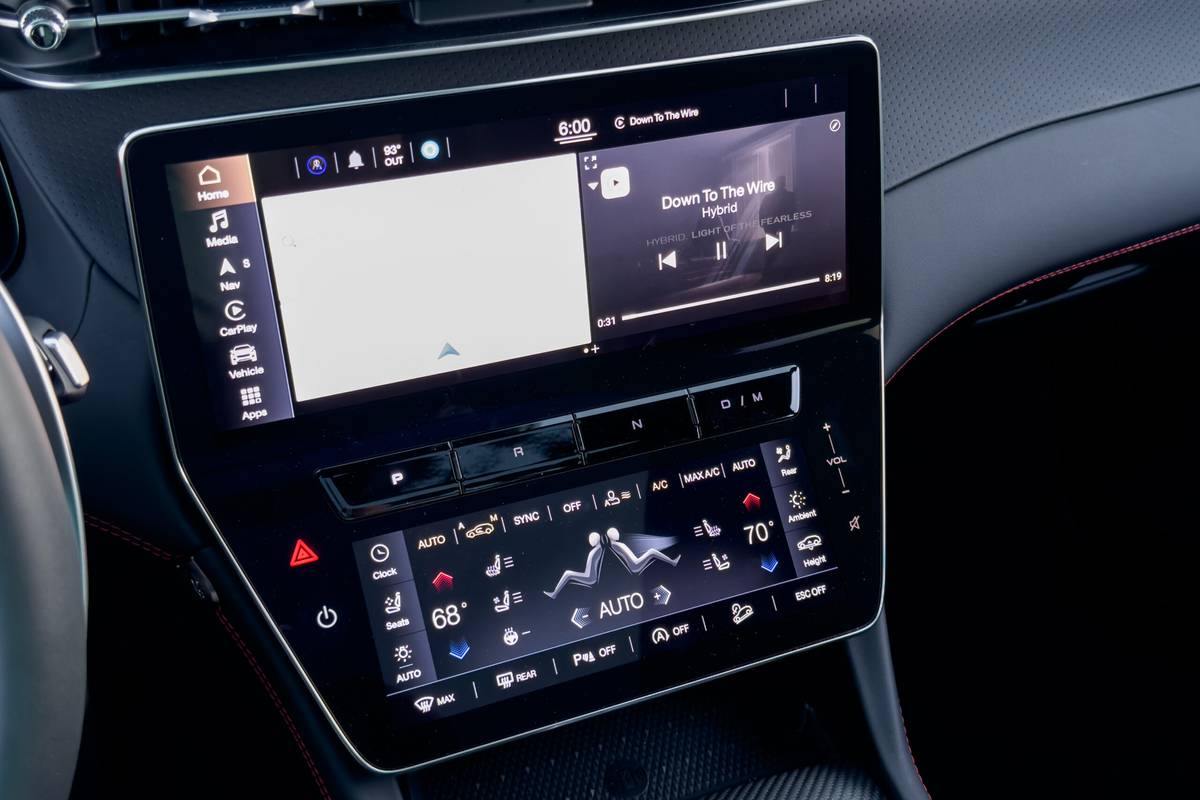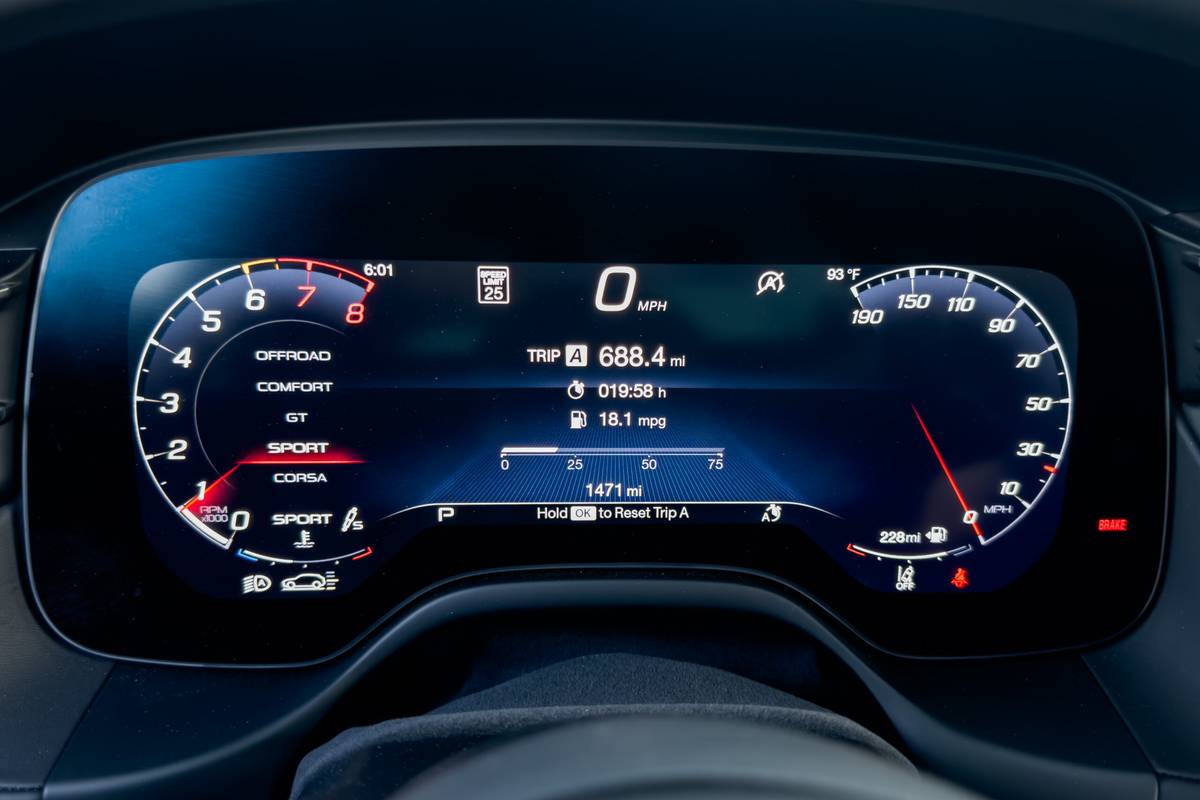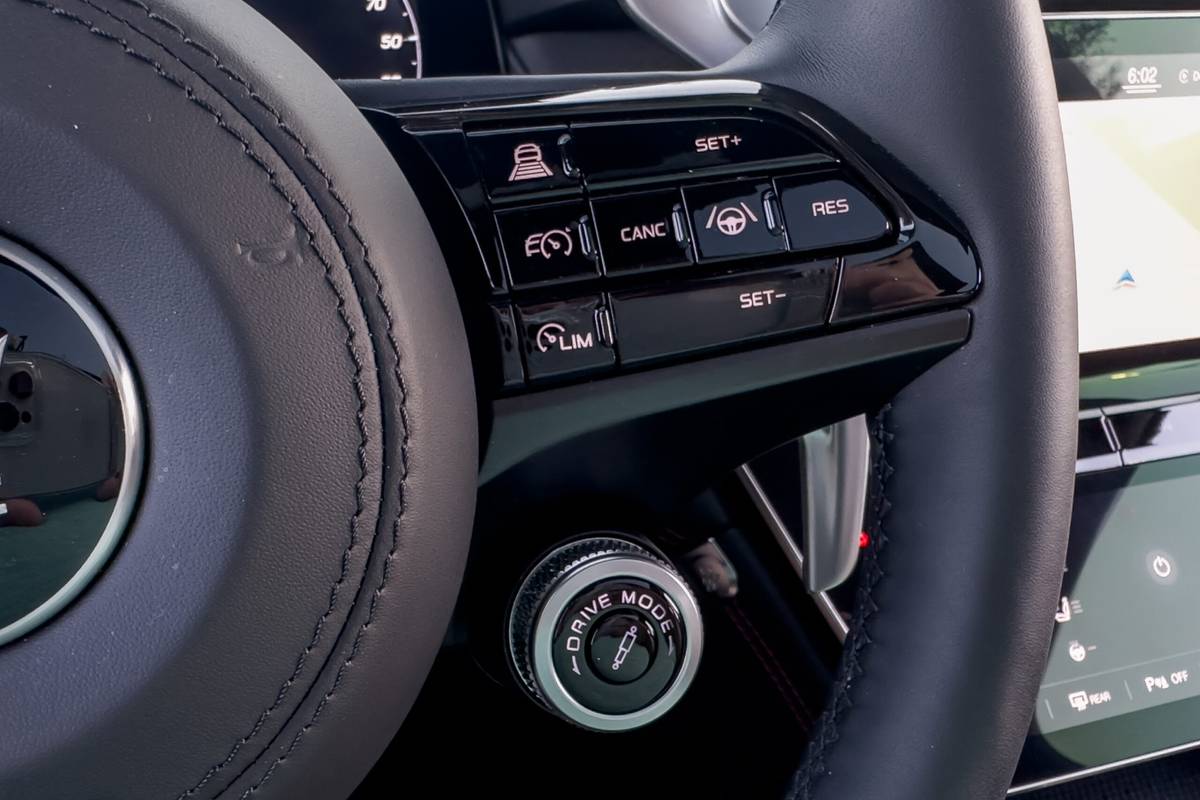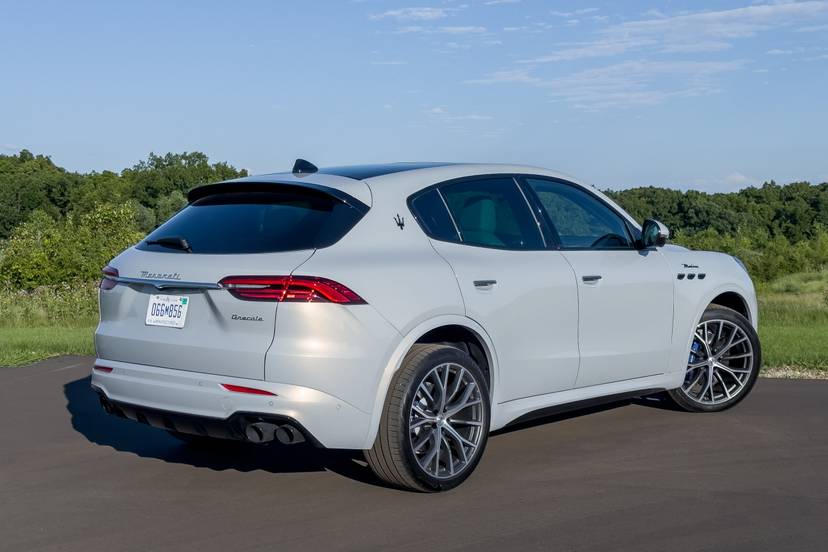
The verdict: Stylish, quick and legitimately fun to drive, the new compact Grecale SUV will help bring (wealthy) new buyers into the Maserati fold.
Versus the competition: The Grecale is as athletic as a Porsche Macan, carries more cachet than an Alfa Romeo Stelvio and provides a sexy (if expensive) alternative to models from Audi, BMW, Lexus and every other brand with a luxury compact SUV.
It seems every luxury brand has a crossover in its showrooms these days; even die-hard sports-car makers like Ferrari and Lamborghini have high-riding, all-wheel-drive four-door hatchbacks sharing floor space with two-door, mid-engine hypercars. Italian luxury brand Maserati, one of Stellantis’ myriad global labels, now has two SUVs in its lineup: the big mid-size Levante and the new compact Grecale.
Related: 2023 Maserati Grecale Breezes in With Up to 523 Horsepower, EV Model Is Next
Based on Stellantis’ “Giorgio” platform — which underpins related models like the Alfa Romeo Giulia sedan and Stelvio SUV, Maserati’s own updated GranTurismo coupe and even the latest Jeep Grand Cherokee — the Grecale is a useful entry point for Maserati to grab new buyers. It’s smaller and less expensive than the big Levante, but does its lower price and lesser stature also mean it’s less luxurious? Less fun to drive? Less “special” in a brand trying to build a global standing by filling its showrooms with more models than it’s ever had? I spent two weeks with two trim levels of the new Grecale (a mid-level Modena and a top-of-the-line Trofeo) to find out. I came away mostly impressed and a little sticker-shocked.
Italian Style Is Real
One thing you can almost always count on from an Italian brand, any Italian brand, is that style will play a huge role in creating a product. That holds true for Maserati. In its history, it has sometimes been considered a near-exotic brand on par with Ferrari and Lamborghini; other times, it’s been seen as more of a near-luxury brand that couldn’t quite find the same footing as those two legends. For most people, though, Maserati still feels special and rare, and in many ways, it is. Thus, it’s expected to look the part — and the new Grecale does.
Despite being a tall-riding crossover, the Grecale eschews blocky, trucklike style in favor of a flowing, curvy, organic shape. It’s more tall wagon than traditional SUV, and that’s perfectly fine in my book. The models you see here are two of the three available trim levels; the white one is a Modena trim and the blue one is the Trofeo. From an appearance standpoint, they don’t look much different: Both have the Maserati family look, with a traditional grille and ovoid headlamps, muscular rear haunches and the age-old vent ports on the front fenders (which are purely decorative at this point). There’s a lot of family resemblance to other Maserati products — that grille is straight from the MC20 supercar, while the boomerang taillights are inspired by the old Italdesign Giugiaro-sculpted 3200 GT — and it’s good to see a fun link to other products past and present.
There are some visual differences between the trim levels, especially the base GT and Modena and the top Trofeo. As a more powerful (and more expensive) vehicle, the Trofeo has more of a performance bent to it, with more aggressive styling. If you compare both cars’ front grilles and bumpers, it’s clear the Trofeo is much more imposing, with larger scoops to accommodate additional cooling airflow. Wheel sizes range from 19 inches up to 21 inches (on the Trofeo), and both the Modena and Trofeo have a staggered wheel setup with wider rear tires, giving the Grecale a more planted look and feel. Overall, the Grecale’s appearance is clean, stylish and immediately identifiable as a Maserati, which is what you want in a luxury brand.
A Properly Luxurious Interior
Slip into the Grecale’s cabin and you’ll find a properly appointed space that’s been outfitted with top-notch materials. Interiors can be a risky place for luxury marques sandwiched into a pantheon of brands like Maserati is — it’s easy for automakers to start trying to shave pennies out of the interior by sharing components with lesser mass-market brands; we’ve seen Lexus interiors dip in specialness over the years, and Cadillacs and Lincolns often suffer from these issues. Maserati, however, has kept the Grecale’s interior pretty special. Most Maserati shoppers are unlikely to find themselves sitting in a Dodge Durango, so they’ll never notice shared components like window switches — but automotive journalists drive everything, so we do notice these things. The Grecale, however, manages to keep them nicely hidden.
The shapes and designs of this interior are attractive and modern, but they’re also a bit generic; it’s a clean interior design that’s not especially dramatic and doesn’t feature anything distinctive or unique to Maserati. Frankly, this could be the interior of the latest Kia. Alfa Romeo does a better job creating a distinctly Italian interior much in the way Porsche does a very German, traditional-Porsche interior on the Macan SUV. Maserati may be trying to set a new design aesthetic with the Grecale’s interior, but while it’s nice and filled with high-quality stuff, it doesn’t look particularly unique.
What the Grecale’s interior does feature is some confounding tech; there are almost no actual buttons or physical controls in there. The climate controls, audio system and multimedia screens are all touch-sensitive panels, which can be a bit irritating to learn and use, but do get easier with familiarity. That said, it’s still distracting to try to operate a low-mounted touch-panel climate-control system while driving. This bit of the interior cannot be classified as a win.
The transmission’s gear selector is also a miss. It’s a push-button affair like you’d find in a Lincoln, but it’s made of gloss-black plastic and is placed in the middle of the dash above the climate controls. The whole touchscreen setup becomes a black plastic nightmare of fingerprints after a while, which sadly detracts from the look and experience of what is otherwise a nicely appointed cabin. Other infuriating buttons include the interior door-release ones, which are perfectly placed to be hit by your knee if you’re someone who tends to sit with their knees out as I do. Sitting at a stoplight, you have to be careful not to accidentally open your door just from sitting comfortably in your seat. Push-button door openers are fine, but the positioning of the Grecale’s is daft.
Seat comfort is another potential issue: In keeping with the sporty Italian theme, the front seats are heavily bolstered and won’t be comfortable for all body types. The seating position is also higher than I’d like, making the rest of the controls and the dash itself feel abnormally low. This is common in Giorgio-platform SUVs; the Alfa Romeo Stelvio has the same problem. It feels as if someone took a sedan and, instead of raising the whole interior to SUV levels, just made the seats higher. Things aren’t bad in the backseat, though; while the Stelvio suffers from seriously curtailed legroom in back, the Grecale’s slightly longer wheelbase seems to have translated into better legroom for rear passengers. It’s still very much a compact SUV, but it’s decidedly roomier than most of its competitors.
Overall, the interior gets mixed reviews. While it feels upscale and has some nice touches (e.g., a reconfigurable digital clock high in the center of the dash) it’s also compromised by some design choices (touchscreen everything, black plastic surfaces). At least the multimedia system, which is a reskinned version of the Stellantis Uconnect system that appears in many different models, is easy to use and manipulate, and connecting a personal electronic device is easy.
Motion Makes It Better
Like any Italian luxury sports machine, the real test of its worth comes when you fire up the engine and head out on the road (or, soon, activate the electric drive — an EV version of the Grecale is in the works). In this department, the Grecale shines. It’s much more athletic than a lot of its luxury SUV competitors, and after sampling two different trims with two different powertrains, I came away a fan.
The base powertrain combines a turbocharged 2.0-liter four-cylinder engine in a mild-hybrid system with standard all-wheel drive and an eight-speed automatic transmission. The Modena trim also features this powertrain, but while the base GT makes 296 horsepower, the Modena gets a boost to 325 hp. My first test car was a pearlescent-white Grecale Modena, and while some people might wince to think their rather expensive luxury SUV comes with a four-banger under the hood, this is truly an excellent motor. It’s snorty, quick and delivers its power in a seamless rush with no turbo lag. It’s fantastic to drive around town, it has plenty of power for highway on-ramps, and it makes a pleasant buzz while motoring along in comfort on the interstate.
The up-option powertrain that comes in the Trofeo, however, is truly next-level: a twin-turbocharged 3.0-liter V-6 that makes 523 hp and shares a lot of its engine technology with the Maserati MC20 supercar’s Nettuno V-6. While I drove the Grecale Modena through suburban Detroit, I had the Grecale Trofeo in Palm Springs, Calif., and was able to try it out on twisty canyon roads. There, when I slipped the Grecale into Sport mode, the thing became a canyon-carving monster, with tons of grunt and a ferocious Italianate snarl that reverberated off the canyon walls. In both models, the transmission was very well tuned and matched its engine beautifully, with smooth, crisp shifts and no need to make use of the flappy paddle shifters Maserati put behind the chunky steering wheel.
If I had one complaint about either powertrain, it’s that the drive modes can be a bit tricky. The GT and Modena have four drive modes (Comfort, GT, Sport and Off-Road), while the Trofeo has five (adding a Corsa race mode). Comfort is too sedate; accelerator response is a bit slow and transmission shifts are skewed toward calmness over alacrity. GT mode helps that a bit, but not much, while Sport mode tends to make the Grecale a little too high-strung for daily use. You can compensate for this tuning by driving more aggressively in Comfort or GT mode around town, then switching over to Sport or Corsa mode for places like highway on-ramps, switchbacks or canyons. But you won’t want to leave it in any one mode for very long; getting maximum enjoyment out of the Grecale requires that you play with the settings.
Optional on the Modena and standard on the Trofeo is an adjustable air suspension that does an outstanding job providing a smooth and controlled ride, ironing out pavement imperfections and isolating the cabin enough to make it feel like a true luxury vehicle. Things firm up nicely in more aggressive modes, keeping the body level when cornering and proving not just the Germans can make an SUV that knows how to handle. The Grecale can tackle long stretches of highway or tight mountain curves with ease, and it does so in a way that honors its heritage as a performance brand. If you’re a performance-minded SUV intender and want something other than a Porsche Macan, the Maserati Grecale is a worthy alternative.
More From Cars.com:
- What’s New With SUVs for 2023?
- Specs Comparison: 2023 Maserati Grecale Vs. 2023 Porsche Macan
- 2023 Porsche Macan T Review: Sportier Doesn’t Always Mean Faster
- Research the 2023 Maserati Grecale
- Shop for a 2023 Maserati Grecale
The Price of Exclusivity
Maseratis are not as common as Porsches, of course, and one could argue that’s simply a function of Maserati not being nearly as popular a brand as Porsche — or perhaps the fact that there are nearly half as many Maserati dealers as Porsche dealers nationwide. But that exclusivity is also part of the appeal; you’re not likely to see yourself coming and going in a Maserati. Even so, the Grecale isn’t priced inappropriately: A ‘23 Maserati Grecale GT starts at roughly $65,000, jumps to around $75,000 for a Modena, then makes a huge leap to $105,500 for a Trofeo. That means you’re paying more than $30,000 extra for that V-6, which is a little bit nuts considering how excellent that turbo four-cylinder really is.
Just like competitors such as Porsche, a lot of the Grecale’s equipment is not standard; it comes in options and packages. So while my white Maserati Grecale Modena may have started around $75,000, the final sticker price was $96,600 thanks to options ($9,000 pearlescent paint, $1,800 wheels, $7,900 for three technology and trim packages, etc.). The as-tested price of my Trofeo model was over $120,000. These are extraordinary prices for a luxury compact SUV, and they begin to rival prices for some luxury full-size SUVs. At $75,000, the Grecale Modena is pretty fantastic. At $100,000, one begins to think the company is banking on the Maserati name as much as the vehicle’s actual performance to justify the price — and it might just work.
Related Video:
We cannot generate a video preview.
Cars.com’s Editorial department is your source for automotive news and reviews. In line with Cars.com’s long-standing ethics policy, editors and reviewers don’t accept gifts or free trips from automakers. The Editorial department is independent of Cars.com’s advertising, sales and sponsored content departments.





























